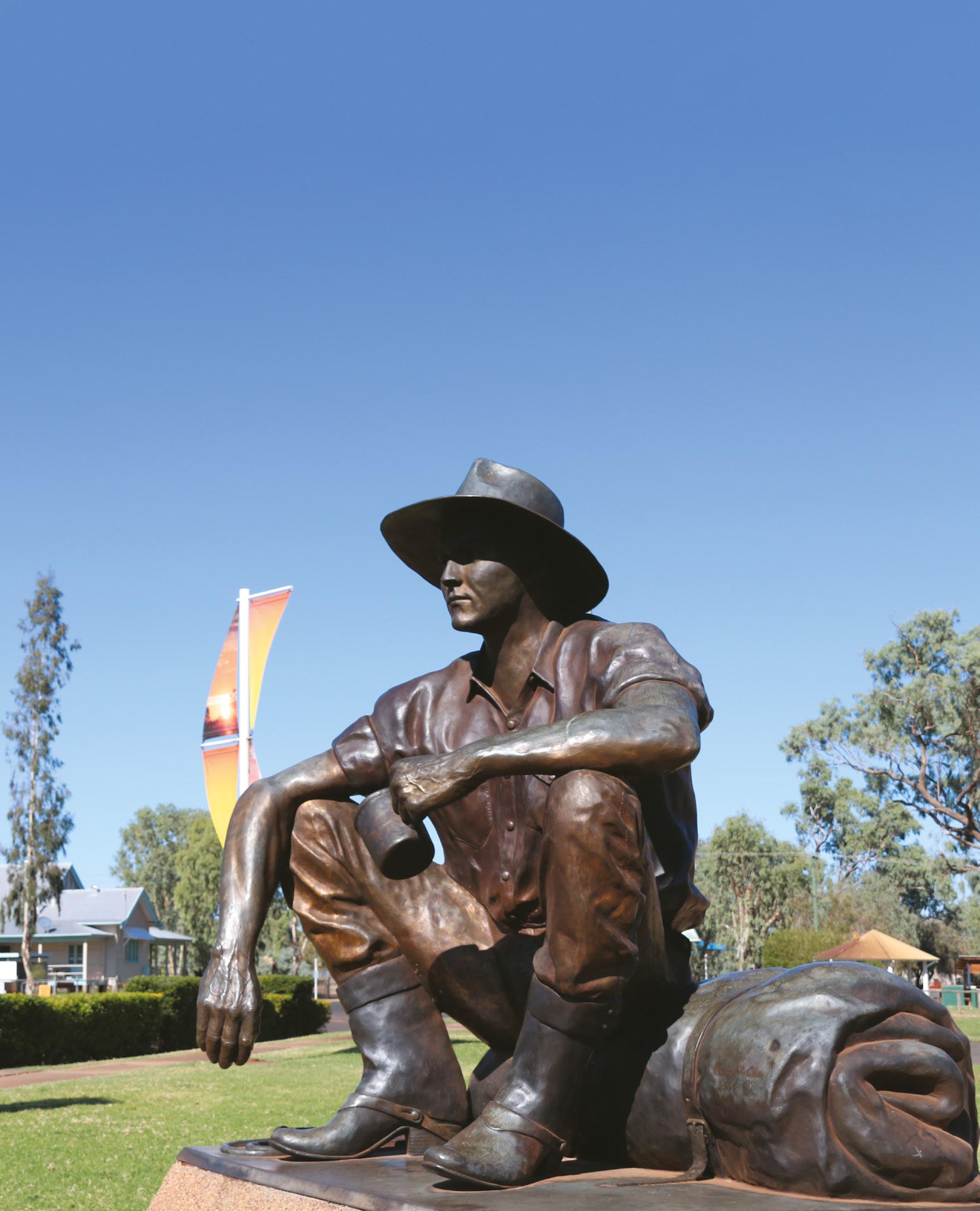

cunnamulla
SOAK IN ARTESIAN SPRINGS, DISCOVER RICH HISTORY AND EXPLORE UNTAMED NATURE
Paroo Shire
AN AUTHENTIC OUTBACK EXPERIENCE Cunnamulla, the largest town in our Shire, offers an unforgettable blend of adventure, relaxation, and rich history. Whether you’re seeking an authentic outback escape or a tranquil retreat, Cunnamulla has something for every traveler.
Artesian Waters
Start your journey by soaking in the town’s new artesian hot springs complex or stay at Charlotte Plains, a historic sheep station where you can unwind in open-air baths filled with mineral-rich artesian water. Both offer a rejuvenating experience like no other. The therapeutic properties of these ancient waters make Cunnamulla an emerging wellness destination, perfect for unwinding after a day of exploration.
Birdlife And Nature
Nature lovers and photographers will be captivated by the stunning landscapes that surround the town. The Warrego River provides a scenic backdrop for kayaking, fishing, or simply enjoying a peaceful sunset.
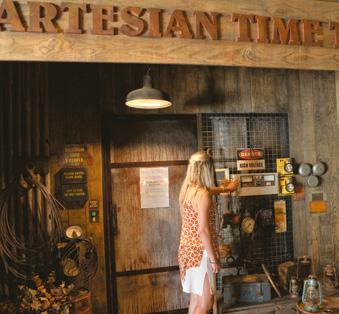
Birdwatchers will find a paradise here, with numerous birding spots including Bowra Sanctuary, we are home to over 200 bird species including the iconic pink cockatoo, flocking to the region’s waterways and bushland.
A Rich History
Cunnamulla is steeped in history and heritage, and well known for the iconic “Cunnamulla Fella” statue. This larger-than-life tribute to Australia’s legendary stockmen celebrates the town’s deep connection to the land and its hardworking spirit. The Cunnamulla Fella Visitor Information Centre is a mustvisit, offering insights into local history, indigenous culture, and the importance of the Great Artesian Basin through the fascinating Artesian Time Tunnel.
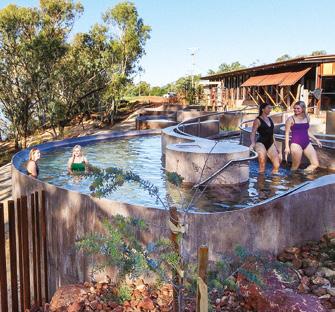
● Visit the Larger than Life Cunnamulla Fella
● Journey back 100 million years in the Artesian Time Tunnel
● Uncover town stories of the Cunnamulla Heritage Trail
● Enjoy sunset drinks from the Warrego River Walk
● Follow the looped walking track to the Bushlands
● Take some time to spot endemic bird and wildlife
● Stake out the perfect fishing hole
● Relax in the Cunnamulla Hot Springs
● Take a day trip to Charlotte Plains
● View the holographic Cunnamulla All Aboard movie
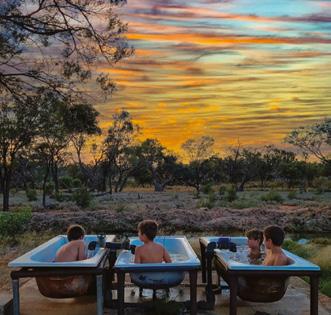
who is the cunnamulla fella?
Since Cunnamulla and the Paroo Shire’s settlement in the 1860s, primary industry has always been the mainstay of the community, in particular sheep and cattle.
Cunnamulla Fella Story & Song
Never was this more so than in the 50s and 60s when Australia was riding on the sheep’s back, wool was pound for pound and cattle were worth their weight in gold. This vibrant era provided endless employment opportunities for young lads just out of school when most finished at year eight to work on the sheep and cattle stations.
These young fellows, many only 15 or 16, worked long, hard hours from sun up to sun down often seven days a week mustering sheep, chasing scrubbers and breaking in horses. At the end of a hard day’s work they would squat around the campfires on their saddles or swags yarning about the day’s events.
The town was booming as the large properties employed so many men. When they came to town the pubs would overflow and these young fellas could be seen squatting around the streets in the classical pose. It was around this time that Stan Coster wrote the song The Cunnamulla Fella, later immortalised by the late Slim Dusty. The lines from the song that refer to the Cunnamulla Fella are:
“NowI’mascrubber,runnerandabreakertoo, Iliveondamperandwallabystew, I’vegotabigcattledogwithastaghoundcross, Ineversawthescrubberwecouldn’ttoss, ‘Cause I’m the fella from Cunnamulla Yes I’m the Cunnamulla Fella”
As a tribute to all these young fellas who worked the land and the late Slim Dusty, a project by the Paroo Shire Council, which had taken two years to bring to completion, came to an end as the Cunnamulla Fella was unveiled to the public on Friday 18 November, 2005.
The idea to turn a folk legend into a reality was first accepted by the Council late 2003 when it was decided to run a nation-wide competition asking those interested to sketch up in any medium their vision of the Cunnamulla Fella. It was felt if such a project could be brought to completion it would be a fitting tribute to the late Slim Dusty who together
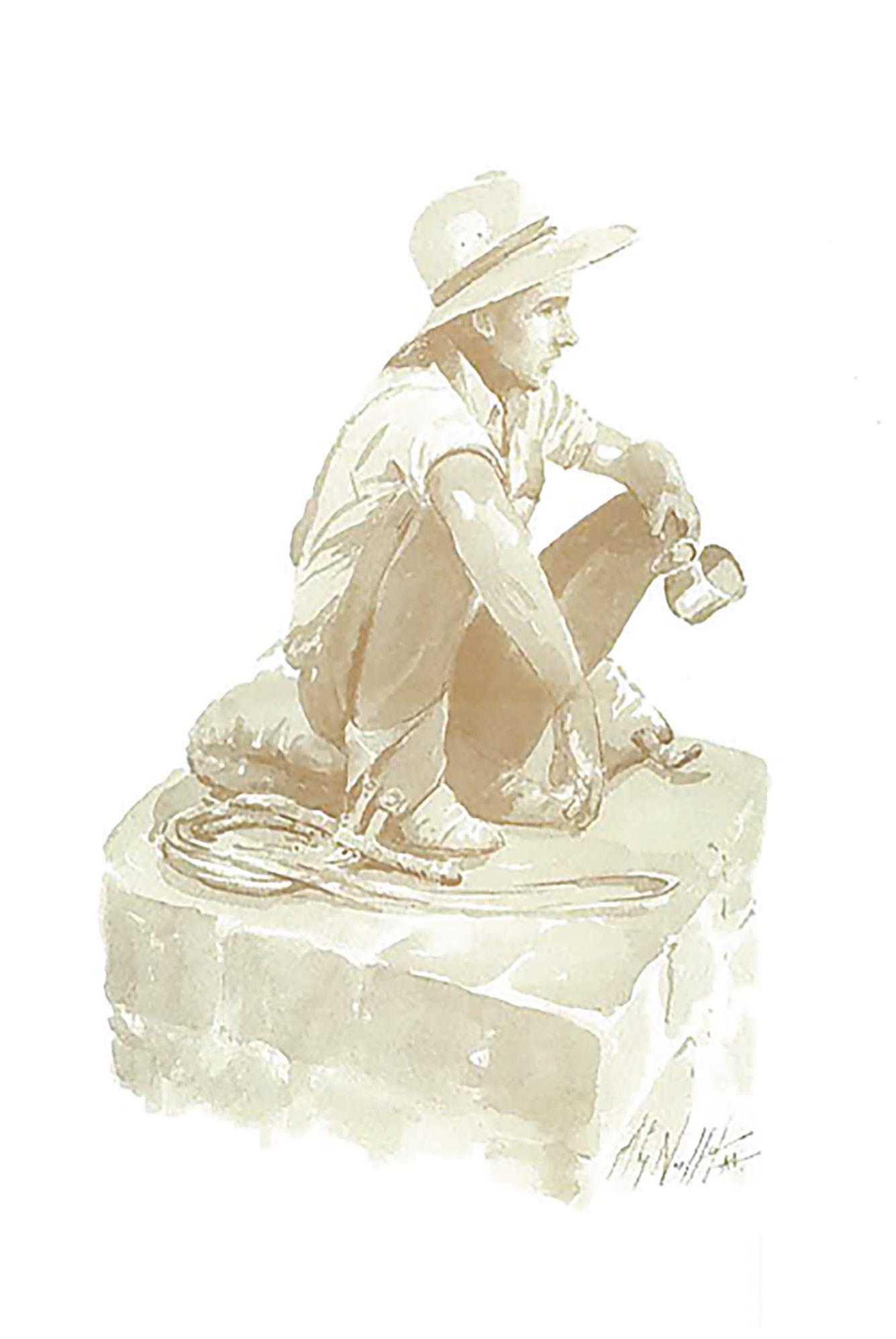
with his family and band members had performed in Cunnamulla many times over the years. In fact many Slim Dusty fans were broken hearted at the news of his death and requested Council to do something in memory of Slim.
The Council received around 50 entries in the art competition from all over the country. The winner however, chosen by Council in early 2004, was of a young squatting stockman after a hard day’s work, sketched by Michael Nicholas from Brisbane, who also had strong family connections with Cunnamulla. Mike had worked in Cunnamulla as a Policeman in 1960 and witnessed for himself the way of life in western Queensland.
The sculptor Archie St Clair was Territory born and bred and from his early teens had been involved with the cattle industry, amongst other things, as a ringer, stockman, rodeo rider, bull catching, competing in work championships, station manager and helicopter mustering contractor. For years he had been perfecting the art of bronze sculpturing specialising in monuments and outback heritage related pieces.
On Monday 10th October the completed Cunnamulla statue was transported from the city of Grapevine Texas, where he was created, to Brisbane, and with the help of Brisbane City Council was displayed for two days in the Queen Street Mall. Thousands of people had the opportunity to be photographed with him, read the story and learn more about Cunnamulla and the Paroo Shire.
The Cunnamulla Fella arrived home via St. George Freightliners on Tuesday 18th October, 2005, and after finishing touches by Archie, volunteers and Council Staff, was displayed on the lawns of the Shire Hall in the centre of town.
On the site where the Cunnamulla Fella now stands as a tribute to all the hardworking stockmen and to Slim Dusty, Stan Coster and others, once stood the New Western Hotel and the public bar where many of the men he honours enjoyed a cold one.
first nations history
We acknowledge the traditional custodians of this land, all whom have a deep attachment to the Paroo Shire. We hold in respect the Kunja, Kooma, Budjiti, Bidjara, Kullilli, Mardigan & Murrawarri peoples and their elders past, present and emerging.
We are currently working with traditional owners to review and update the history of our region. This is a work in progress and is taking some time to ensure the history we relate is a true and accurate record of those who came before us.
The traditional owners of the land are the Kunja people, who speak the Gunya language. The Kunja lived in harmony for millennia and have a deep spiritual connection to the land, which is reflected in their cultural practices, Dreamtime stories, and oral traditions. They developed a deep understanding of its plants, animals, and seasons. They hunted, fished, and gathered food from the land, and it was carefully managed to ensure its sustainability for future generations.
Prior to European arrival, the Cunnamulla area was part of a vast network of trade routes and ceremonial paths used by Indigenous language groups across the Australian continent. These routes facilitated
the exchange of goods, knowledge, and cultural practices, fostering connections between different Aboriginal nations.
In 1846 Sir Thomas Mitchell passed through the area while searching for a route to the Gulf of Carpentaria. In 1847 Edmund Kennedy, who had been Mitchell’s second-in-command, revisited the area and found that the Victoria River was actually the Barcoo which flowed into Cooper Creek.
The history of the Cunnamulla area from this point, becomes a complex and challenging one. It is a story of dispossession, violence, and resilience. However, it is also a story of survival and hope.
When William Landsborough explored the area and he provided positive reports of the richness of the land. Pastoralists soon followed; they were attracted by fertile land and access to the water from the Warrego River.
A town soon sprung up and by the 1860s It had quickly grown into a service centre for the surrounding pastoral stations, providing essential goods and services to the settlers and drovers passing through the area.
The first artesian bore was sunk in 1889 and grazing and the pastoral stations started spreading throughout the region. The explosion of pastoral stations unfortunately had a devastating impact on the Kunja people.
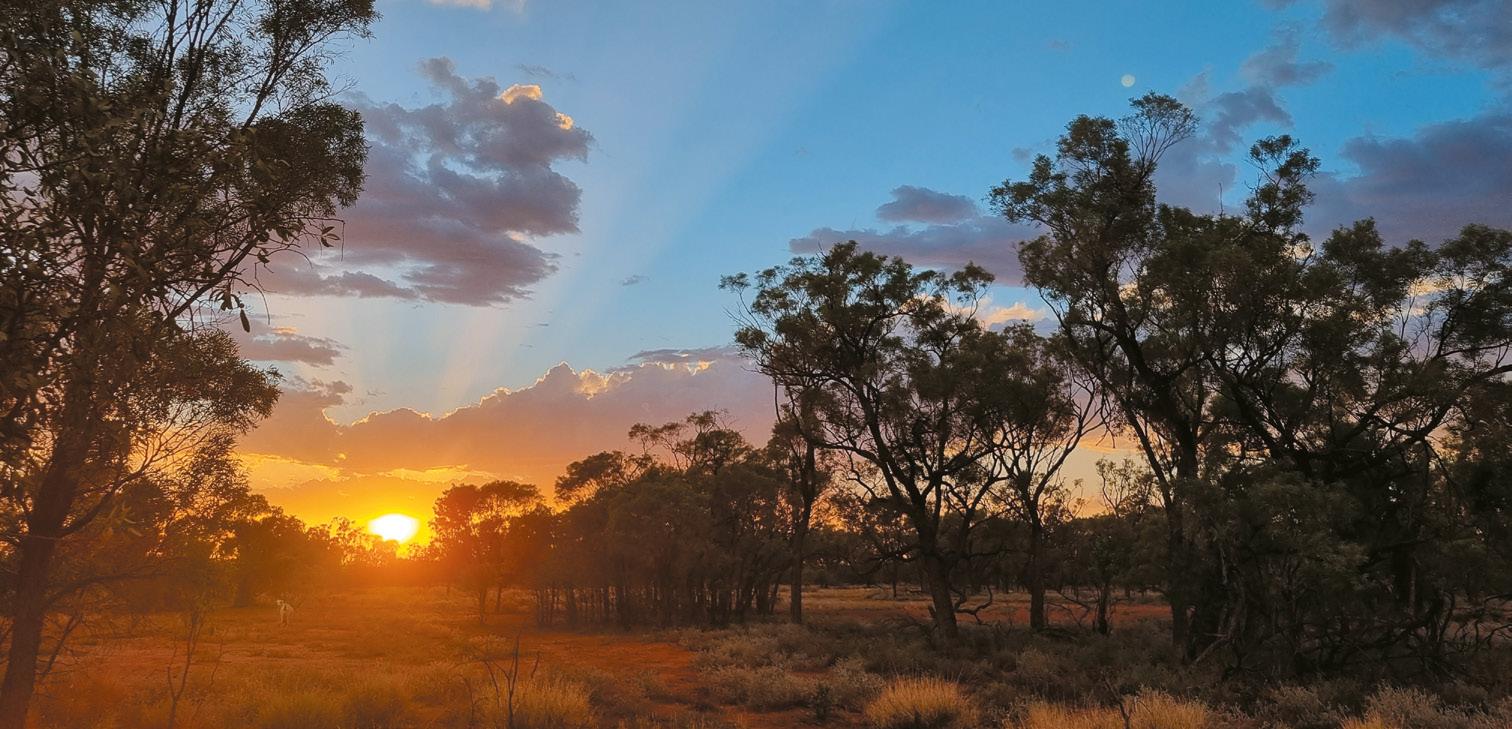
But not only the Kunja peoples, other Aboriginal language groups who lived within the Paroo Shire included the Kooma, Budjiti, Mardigan, Kullilli, Murrawarri and Bidjara peoples. These groups share a common culture and have close ties to the Kunja people. Many were dispossessed of their land and forced to work on the stations, this forced coming together of different language groups caused further problems.
In the early 1900s, the Queensland government began to implement assimilationist policies, which aimed to remove Aboriginal people from their traditional lands and culture. Many Kunja and other traditional owners were removed and forced to move to fringe camps outside of town, where they lived in poverty and squalor.
Despite the hardships they faced, the Indigenous people of this area have maintained a strong cultural identity. They continue to practice traditional language, customs, and ceremonies.
Cunnamulla experienced periods of economic prosperity, particularly during the late 19th and early 20th centuries when the wool industry was booming. However, like many rural towns, it also faced challenges such as droughts, economic downturns, and changes in agricultural practices that impacted the local economy.
In 1990 the town was devastated by a flood which saw the Warrego River reach 10.15 metres a levy was planned and constructed to protect the town, but in recent decades, there has been a growing recognition of the importance of Indigenous knowledge and perspectives in land management and conservation. Indigenous land management practices, such as controlled burning and traditional ecological knowledge, have been increasingly acknowledged for their effectiveness in promoting biodiversity and mitigating the risk of wildfires.
Today, our region has become a melting pot of diverse cultures, with Indigenous Australians, European settlers, and migrants contributing to our character. We are working together to acknowledge the history and differences we have experienced but bring our community together to make this an amazing place for our children and children’s children.
the cunnamulla fella
Now I’m a scrubber, runner and a breaker too I live on damper and wallaby stew
I’ve got a big cattle dog with a staghound cross I never saw the scrubber we couldn’t toss
‘Cause I’m the fella from Cunnamulla
Yes I’m the Cunnamulla Fella
Now once when I was drovin’ on a cattle trail
I met a little girl named Adavale I said Marry me Ada and I’ll be the fella
And we’ll settle down in Augethella
I’ll be the fella from Augethella
Yes I’ll be the Augethella Fella
Oh she said her daddy’s name was Charleville
She had a lot of kiddies and a lot of bills
So I grabbed my horse that was nice and handy
And I never stopped till I reached Dirranbandi
I was the Dandy at Dirranbandi
Yes I was the Dirranbandi Dandy
Now in my moleskin trousers and my Williams boots,
Aboard an outlaw as he leaves the chutes
In my gooseneck spurs I rake their fiery hide
And the girls all shouted around the ringside
For he’s the fella from Cunnamulla
Yes he’s the Cunnamulla Fella
Now I’ve done a little fighting in the western bars
Done a little lovin neath the moon and stars
I wear bright clothes with shirts full of colour
And the girls know me as that certain fella
Yes he’s the fella from Cunnamulla
Yes he’s the Cunnamulla Fella
Oh he’s the fella from Cunnamulla
Yes he’s the Cunnamulla Fella
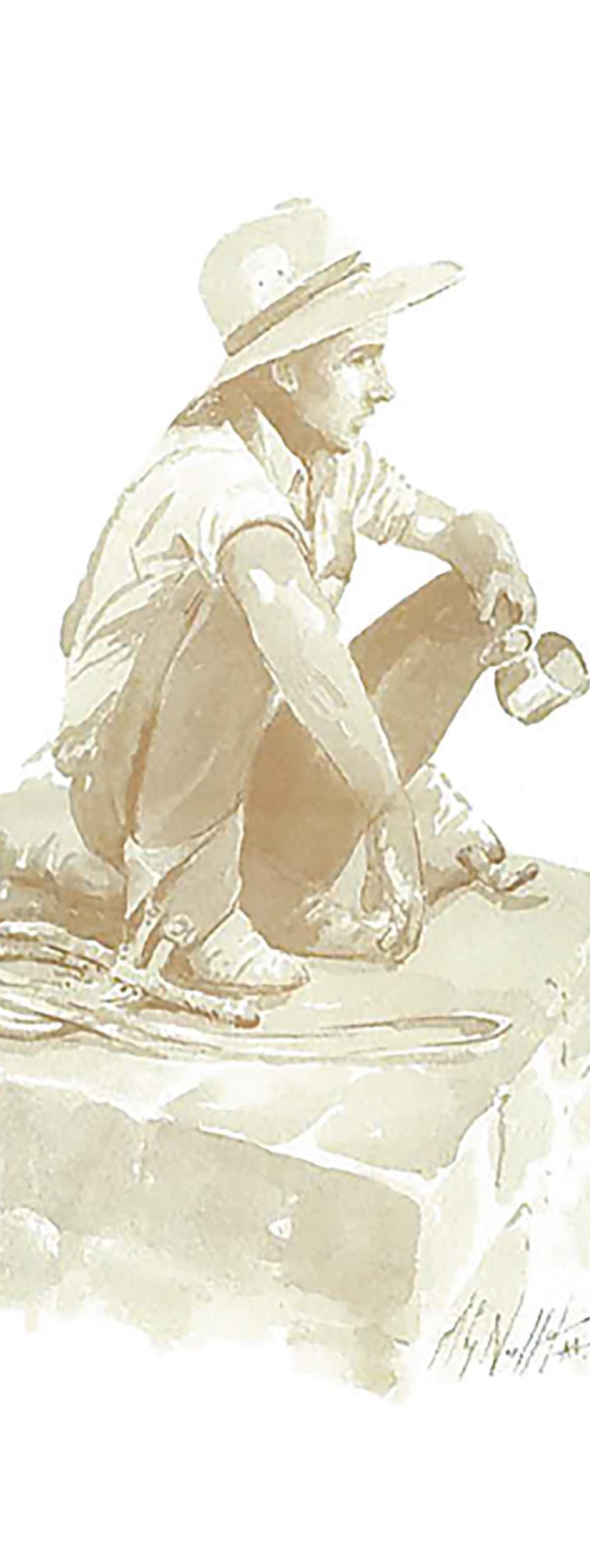
The Cunnamulla Fella is a song written by Stan Coster and sung by Slim Dusty. The town of Cunnamulla has erected a statue of the Cunnamulla Fella as a tribute to Stan and Slim and to the ‘ringers’ of the bush.
hot springs experiences
In Paroo Shire we have seven different hot springs experiences and three of these are within Cunnamulla town and surrounding stations.
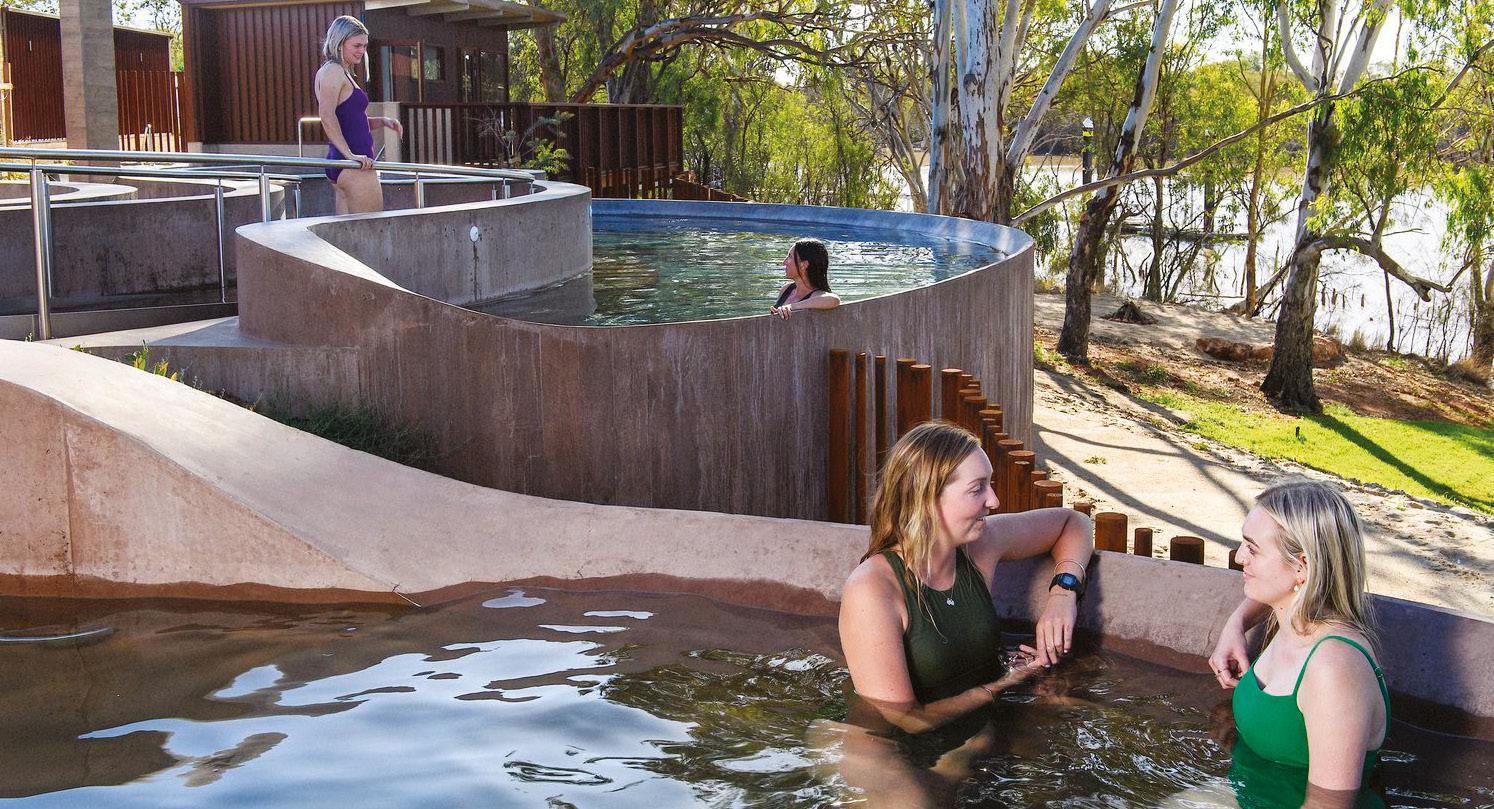
Charlotte Plains
Get a taste of the real outback with a visit to Charlotte Plains Station, a working sheep and cattle property. Apart from the abundant bird and wildlife, the big attraction is the 1890s bore baths. Camp up, spend a few days and relax in this natural artesian water and soak your cares away.
Cunnamulla Hot Springs
Experience seven different free flowing pools in the state of the art complex. There are hot pools to dip into for a steamy session and cold plunge pools to chill your body – add in a sauna, steam room and relaxation areas to complete the facility, all alongside the natural surroundings of the Warrego River.

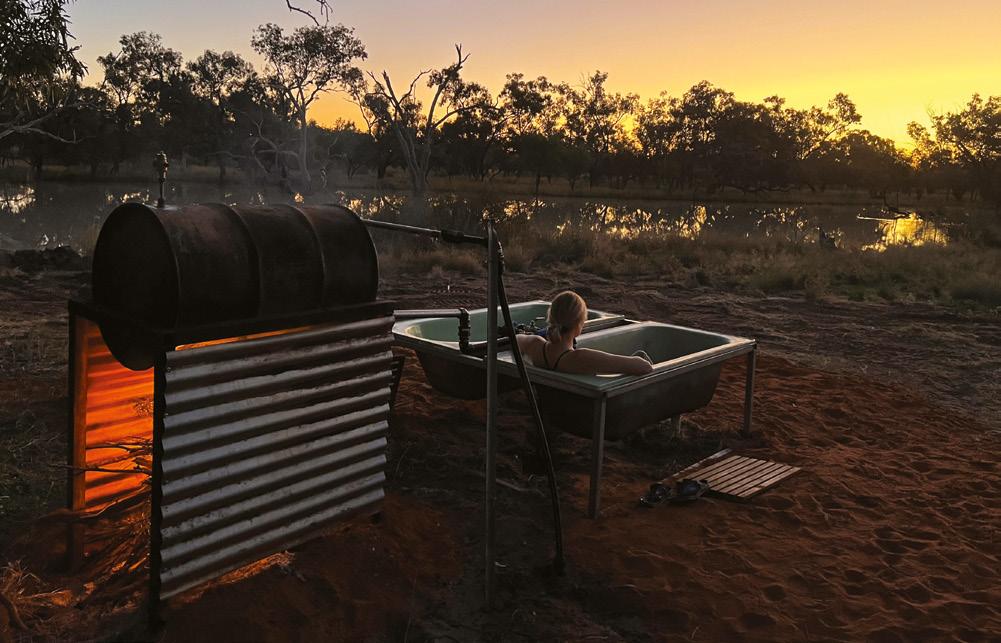
Francvillers Station
If you really want the privacy and genuine experience of bathing in the outback Francvillers Station is a working Sheep, Goat & Cattle property. They offer seclusion, only taking three to four self-sufficient groups at a time ensuring complete privacy, no shared space. Just the real Outback. Baths have been installed in the campsite to allow bathing under the outback night skies!
the great artesian basin
Come into the Cunnamulla Visitor Information Centre and experience the Artesian Time Tunnel transporting you back in time 100 million years, when dinosaurs roamed the earth. It was during this period that water became trapped in sedimentary rock layers, only surfacing through mound springs, the natural pressure release valves of the artesian basin. Stories of Aboriginal dreamtime follow natural water courses which were the same tracks followed by early pioneers, pastoralists and miners.
The Great Artesian Basin Fact sheet
● The Great Artesian Basin covers an area as large as 1,711,000 square kilometres or approx 1/5 of the Australian continent.
● The Artesian Basin starts at the tip of Queensland and underlies parts of New South Wales, South Australia and the Northern Territory. (Refer map opposite)
● The age of the water is estimated to be approx 2 million years old and dates back to as far as the “Ice Age”.
● The Aboriginal people have been utilising the Artesian Water through “Mound Springs” for many years prior to European Settlement. Mound Springs are places where the artesian aquifers naturally flow to the surface.
● The first ever bore to be sunk was in 1878 on “Kallara” Station (located north west of Tilpa, NSW).
● The first bore to be sunk in Queensland was 100km South East of Cunnamulla on a property by the name of “Noorama” in 1887.
● The average temperature of the Artesian Basin is between 30–50° and a max of 100° in some places.
● In 1999 the Commonwealth and State Governments installed what is called the Great Artesian Basin Sustainability Initiative – GABSI Scheme. This is a joint incentive by property owners and the government to conserve water through the capping of flowing bores and install a piping system to reduce the amount of water wastage and evaporation that occurs through the use of bore drains on properties.
● As at 2022, more than 775 bores have been rehabilitated and 450 bores piped. Around 15,000km of open drains have been decommissioned over the years. This has saved more than 228,000 megalitres of water with investment of over $243 million from the Australian and Queensland governments, industry and landholders.
● The current aim of the plan is to have all eligible stock and domestic bores watertight by 2032

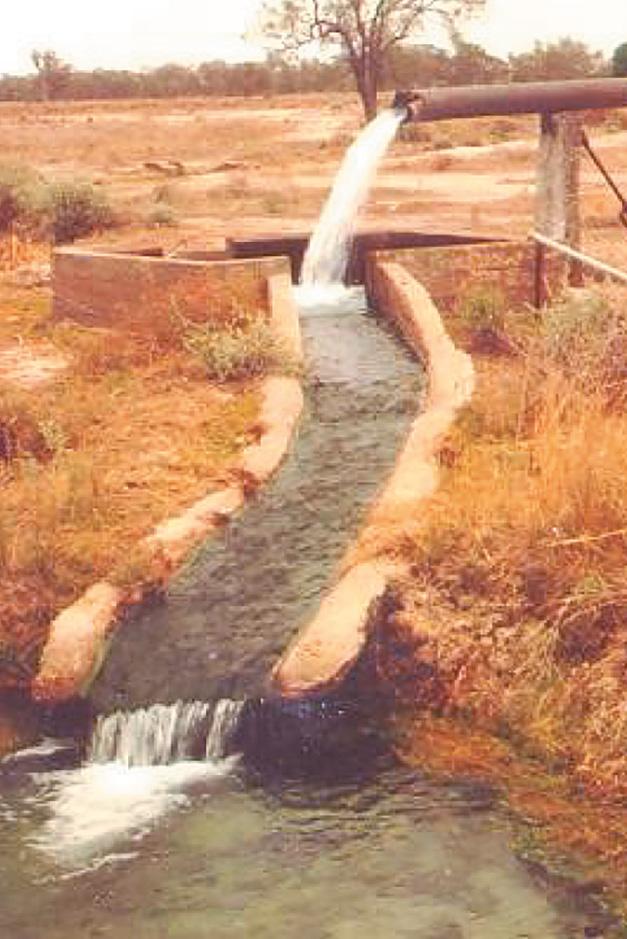
birdwatching in the Paroo Shire
Cunnamulla, Eulo, Yowah and Wyandra are home to 57 varieties and over 245 species of Australian native inland and water birds, including the endangered pink cockatoo and Australian painted-snipe. There are also a number species listed as vulnerable including the painted honeyeater, southern whiteface, blue winged parrot, grey falcon and white-throated needletail.
The Cunnamulla Visitor Information Centre sells several different bird books to help identify some of the many species found in the region. There are many locations to birdwatch within the shire, but some of the top birdwatching areas include;
Bowra Wildlife Sanctuary
Bowra Wildlife Sanctuary is internationally renowned as one of Australia’s most rewarding bird watching destinations. Purchased for conservation by the Australian Wildlife Conservancy (AWC), the area is now protected forever as part of Australia’s National Reserve System. This diverse habitat is rich in birdlife and is a stronghold for many threatened and declining bird species. This 14,000 hectare reserve is home to more than 225 bird species including the iconic Hall’s babbler, the chestnutbreasted quail, Bourke’s parrot, chirruping wedgebill and the black falcon.
Currawinya National Park
Prepare to be awestruck by the lakes, rivers and wetlands of this stunning national park. Lakes Wyara and Numalla are major waterbird habitats and important refuges for all birds and other animals during drought. About 180 species of birds have been observed at Currawinya and at certain times of year is home to over 100,000 water birds.
Paddabilla Bore (Eulo Bore)
Just 16km East of Eulo on Adventure Way, it is not a well known spot for most except avid birdwatchers. It is just off the Adventure Way, accessible to most vehicles but offers no facilities. 150 different species have been sighted including several endangered species.
Cunnamulla Bushlands
Arrange to visit around sunset for the best chance of viewing local bird and other wildlife. Bring some drinks and nibbles to enjoy as you watch Kangaroos coming to the waterhole to drink and perhaps see an Emu or two strolling by. These Bushlands offer you an ideal opportunity to experience multiple ecosystems in one location.
Cunnamulla Evaporation Ponds
The land types in the Paroo Shire attract diverse species of birds and this is a bird watcher’s paradise. 150 different species of birds have been spotted here. Trees on the edge of the ponds can be used as hides to view the birds that frequent here at various times of the year. Please don’t enter the water these are effluent ponds and should be treated as such.
Warrego River Walk
The Warrego River Walk takes you along the scenic banks of the Warrego, across black flood plains and through the channels. It’s a great place for birdwatching, fishing, enjoying the local flora and the serenity of nature.
Allan Tannock Weir
Five kilometres south of town, the weir is the perfect place to sit by the water to watch the birds come and go. It was completed in 1991, supplying Cunnamulla with its water for irrigation and urban purposes. When full, it holds a volume of 4,772ML.
Charlotte Plains
At Charlotte Plains, there are a number of fantastic opportunities for birdwatching and photography. The property is home to over 135 species of birdlife! Sunrise and sunset provide optimal viewing times when the birds group together to visit watering holes, feed, and change locations.

camp at an outback station
Ticklemans Gardens
Ticklemans Garden is situated on the banks of the Warrego River, 30 mins from Cunnamulla on the Old Charleville Rd. Open from the end of March to the end of October each year. All bookings and payments are made through the HipCamp App. This is a dry weather designation only, as the road is mostly unsealed. There are 16 sites available. Six along the River bank, which are strictly 4WD with the remaining sites set up within a designated area, to provide easy drive through sites.
This is a beautiful location to get disconnected from technology and the business of life, and get connected to nature. Enjoy the fishing. Ticklemans is a 3km long billabong that is known as one of the best fishing holes along the river. Yellow Belly, Cod and of course Carp. The wildlife and bird life is amazing. Canoes and Kayaks are also available for hire.
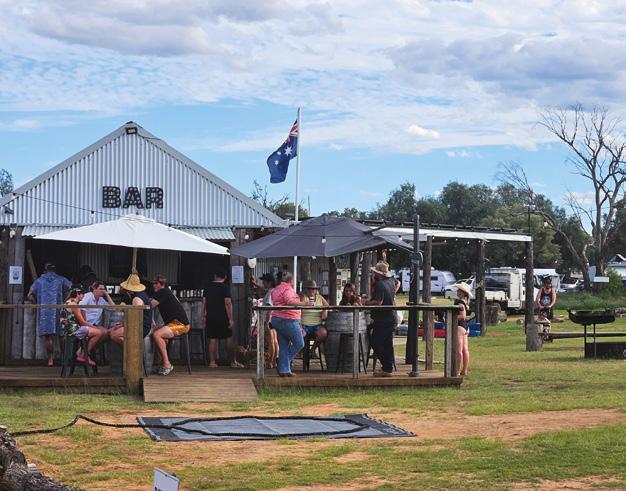
Francvillers Station

Charlotte Plains
Not only a great place to visit for its abundant birdlife and incredible bore baths, but Charlotte Plains is a family owned sheep station with a campground offering both powered and unpowered sites and also shearers quarters for those needing a little more.Grab a guide and take a self drive history tour as well, learning about life on a station over the last 150 years.
Being a working sheep station, they don’t often get to answer their phones, so please book online at their website and check their Facebook page before you visit for road conditions. Especially after rain.
Francvillers Station is a working Sheep, Goat & Cattle property. They offer seclusion, only taking three to four self-sufficient groups at a time ensuring complete privacy, no shared space.
Just the real Outback. Weather permitting.
When you arrive you will be met and guided to the camp site. Perfectly suited to families, grey nomads and those chasing a genuine outback experience. With tributaries and rocky outcrops to explore, wildlife to enjoy and endless skies your stay will be uninterrupted, exclusive and we think, unforgettable.
All guests should respect the natural environment and leave little in the way of a footprint behind when they leave. This is an independent camping experience, it is not hosted and guests are to be self sufficient within their campsites.
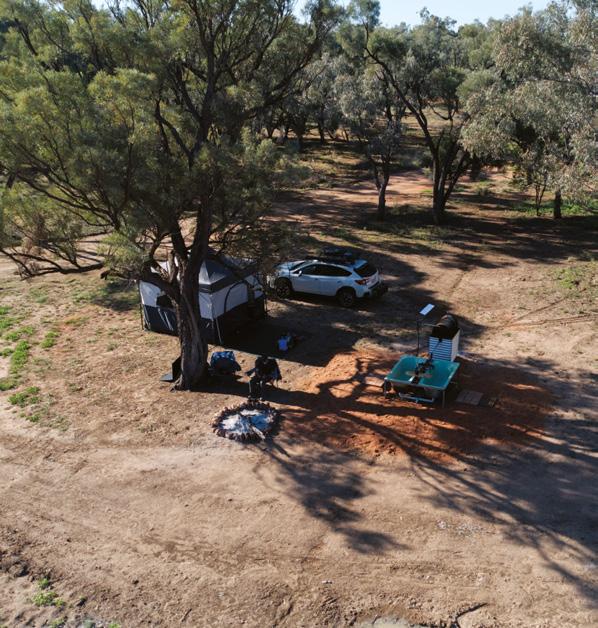
cunnamulla visitor information centre, museum, time tunnel and art gallery
Your first stop when visiting Cunnamulla should be the visitor information centre, your one stop shop for quality gifts, travel information including maps, brochures, and itineraries and of course our Museum, Time Tunnel and Art Gallery.
Staffed by skilled and knowledgeable locals, the Cunnamulla Visitor Information Centre can provide advice on the things to see, things to do and where to eat. The centre itself sells local gifts, handicrafts, genuine indigenous products and your Cunnamulla Souvenirs.
Then take a journey back in time at the regional museum and gain a small insight into the rich culture, heritage and history of this part of Australia.
The Artesian Time Tunnel at the centre provides visitors with an opportunity to gain an understanding of the importance of water from the Great Artesian Basin to sustain life and support our pastoral and mining industries.
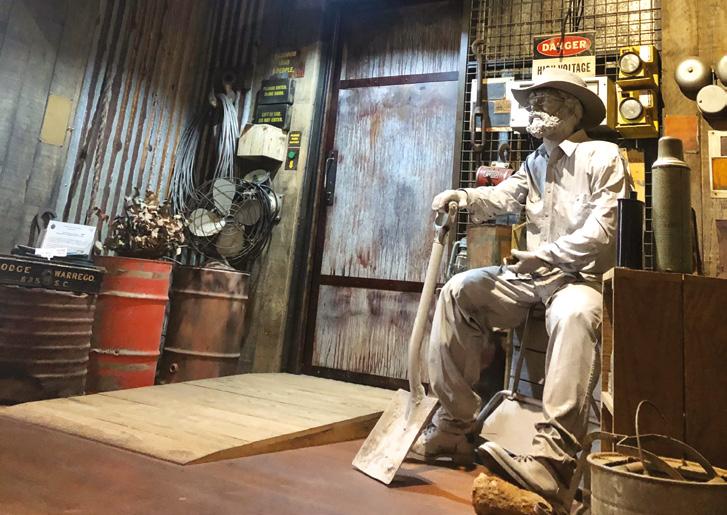

Enjoy the interactive displays and movie of the Great Artesian Basin which we play daily on demand.
Finally view our art gallery where we display the works of artists from around Australia and also showcase the works of many talented artists that live within our region.
Visit our Facebook Page for updated information on the latest exhibitions.
We suggest allowing at least 90 minutes to experience the information centre and all it has to offer.

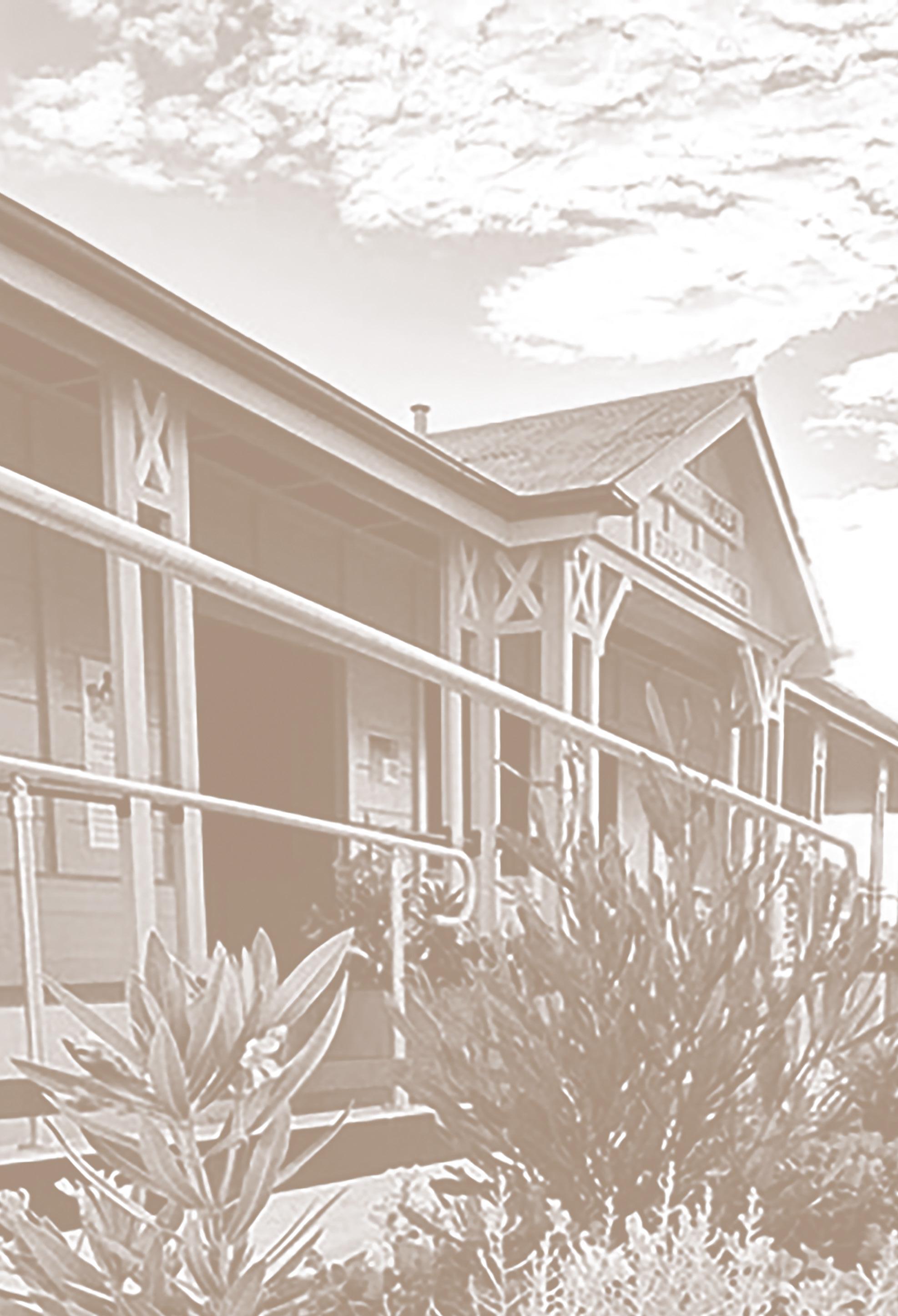
all aboard – cunnamulla off the rails 3D light and sound spectacular
Sit back and relax in our modern theatre as our holographic host the Station Master (Steven Tandy) whisks you back in time on a memorable journey to the “end of the line”!
Meet a cornucopia of Cunnamulla’s colourful characters and hear some of the tallest tales this side of the Queensland border!
Laugh out loud as locals share in their own words what life was like growing up in Cunnamulla, where wool was king, and rail was their lifeline to the world! And don’t miss out on meeting the town band and Band Master Bob Poncho!
Showing seven afternoons a week during the winter season, please book your ticket at the Visitor Information Centre.
During the hotter summer months, we show weekdays on demand, so prior bookings are essential.
The Cunnamulla Railway Station was built in 1898 and was an important feature in town. The station burnt down in the 1930’s but was rebuilt and continued to operate until the last passenger train ran in 1994.
Freight trains still operated until the 2000’s, but a truck crash just south of Charleville destroyed the rail bridge in 2014 and put a stop to any hope of the train ever running again.
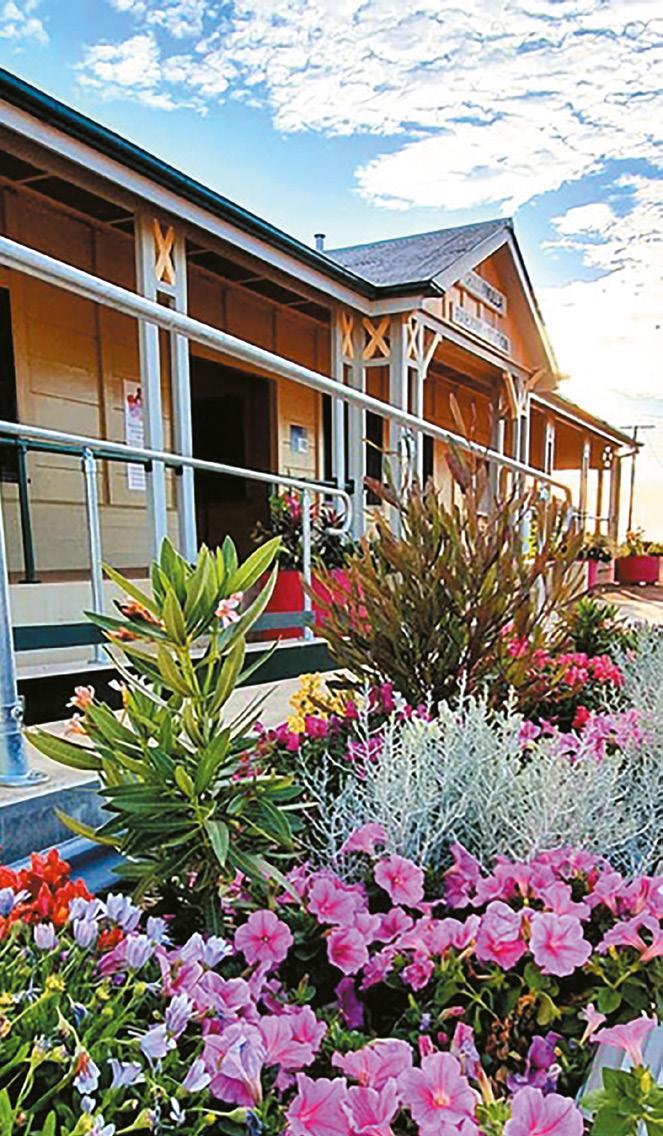
In 2018 the Paroo Progress Association started negotiations with QLD Rail and after long years of hard work they built the new “Cunnamulla All Aboard” theatre at the western end of the railway station.
The first multimedia showing on the new 15m wide screen, in air-conditioned comfort was on May 27th 2021. In 2024 the running of the “All Aboard” show was passed on to Paroo Shire Council and the Cunnamulla Visitor Information Centre.
heritage trail – cunnamulla
HERITAGE TOWN, ESTABLISHED 1867
White settlement of Cunnamulla began in the 1860s at the intersection of two major stock routes, one running from St George to Thargomindah and the other from Charleville to Bourke. The name of the town is derived from an Aboriginal term meaning “long stretch of water” referring to the Warrego River which passes through the town.
A PROUD PASTORAL HISTORY...
Our town has a proud pastoral history with wool growing and beef production still being the main industries in the area. We also have organic wheat and organic lamb production, and harvesting of feral pigs and goats that add to the diversification of the town and district.
Cunnamulla was established soon after William Landsborough’s exploration of the district in 1858. Tinnenburra woolshed, completed in 1896 by James Tyson, was the largest in the world with 101 blade stands. The Tyson properties carried 500 000 sheep and once stretched from Wyandra to beyond the NSW border on the western side of the Warrego River – approximately 10 000 square miles. After shearing the wool was carted by teamsters to North Bourke then ferried by paddle steamer to the seaboard where it was shipped overseas for sale.
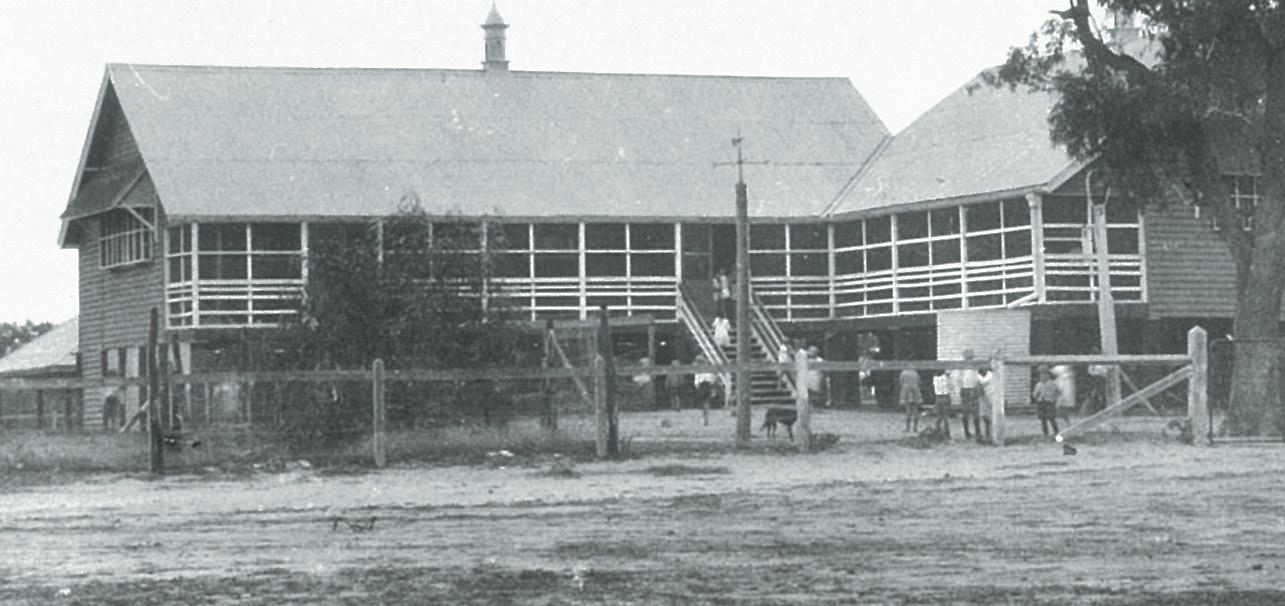
1. Visitor Information Centre – Original State School Building
The first State School was built in 1885 by local carpenter George Emery at a cost of 540 pounds. This building was part of the original school and was moved to its present site in 1995.
State education began in Cunnamulla in 1877 with the opening of a provisional school on the site of the present state school. Mr. John William Bragg was the first teacher. Prior to this a private school was conducted by Mr. Granville in an underground cellar on the site of the Club Hotel. This cellar was 16ft. long, 10ft. wide and 7ft. deep. The light came from an open space between the roof of the building and the top of the cellar. Subsequently the school was moved to a building on the site where the Post Office now stands. This building was also used as a Courthouse, and a lockup was situated on the back verandah.
The present school caters for children from Preschool to Year 12 and has an enrolment of 100–125 pupils. It is one of the best equipped schools in Queensland and employs approximately 40 staff.
CUNNAMULLA STATE SCHOOL BUILT IN 1885
2. Cunnamulla Post Office
The Post Office was originally an L-shaped building positioned where the Cunnamulla Bowls Club bowling green is now situated. After the new building was completed the old one became a police barracks.
The present Post Office is located on the site where the Cobb & Co stockyards once stood. The building has had very few exterior alterations since it was first built in 1890.
Regularity in the mail service was difficult to archive. On one occasion the mail from Charleville was delayed when the pack horses took fright and bolted. It took the mailman four days to recapture both horses. Another time, when the mail was four days late, to add insult to injury the mail bags were thrown down in the middle of the street 100 yards from the Post Office.
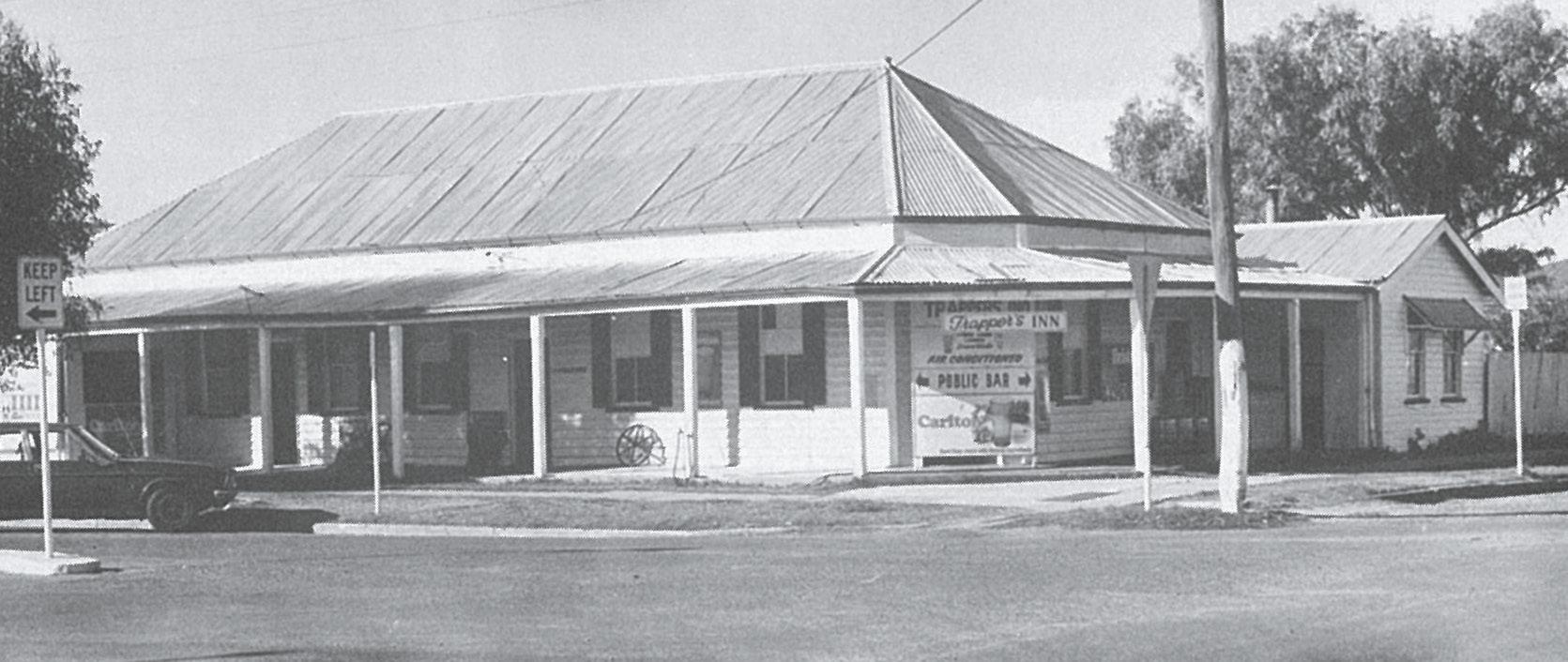
3. Trappers Inn
Built in 1880, this hotel was first named the “Railway Hotel” as it was understood that the railway line would terminate in this section of town. It is believed that the hotel was intended to be a two storey building but a cyclone in 1892 destroyed the partially built top floor. This hotel had many owners including EM Land and PJ Keannealy. The name was changed in the 1970s to the “Trappers Inn”.

4. The Warrego Watchman
The first regular newspaper in town appeared in 1884 as the “Cunnamulla Express”. Edited by C Carbeek, it was published by the Cunnamulla Newspaper Co. The company changed the name of the publication to “Cunnamulla Argus” in 1888 and, after further name changes it became the “Warrego Watchman” and then the “Cunnamulla Watchman”.
The Business was established on this site in 1936 by Jack and Allen Tonkin after their premises in Stockyard Street was destroyed by fire. The company became the Jack Tonkin Printing Co. In 1983 the publication name changed to the “Western Sun”. The company was in the Tonkin family for over 70 years.
TRAPPERS INN

5. Memorial Fountain
This was completed in 1919 as a memorial to the soldiers who died at Gallipoli. A similar one was built the same year in Wellington, NSW. The palm trees growing alongside the fountain were planted on the 50th Anniversary of WWII. The design is art nouveau and the fountain is heritage listed.
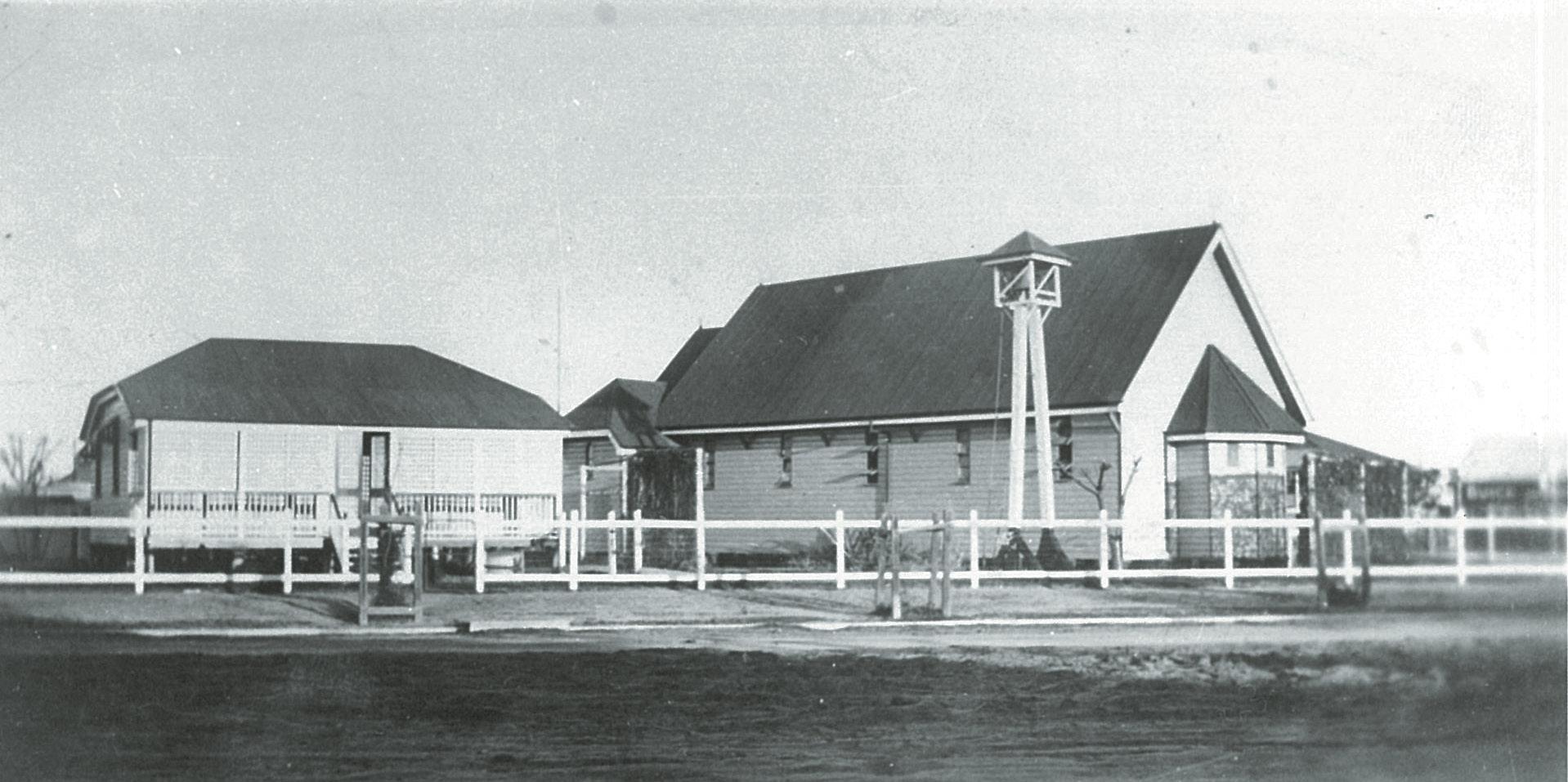
6. St Alban’s Anglican Hall
This building was constructed in 1896. For the next ten years the congregation was served by lay readers until the appointment of the first clergyman. This was the church from which beginning in 1905, the Bush Brotherhood of St. Paul provided pastoral care for the people of Cunnamulla and surrounding districts. Brotherhood Cottage was built around this time.
The new church was completed in 1963 and the old building was moved to its present site to serve as a community hall. The structure of the new church was designed to allow for the extremes of our climate. An aerial view of the church shows the roof to be in the shape of a cross.
MEMORIAL FOUNTAIN
7. Osborne Brothers Welding Works (Blacksmith)
Richard Challenor established a blacksmith/ wheelwright business on this site in 1885, the same year he married Mary Ellen Russell. By 1888 Richard Challenor and Mr. Lint had formed a partnership which continued until 1908. Richard and Mary lived in the cottage at the rear of the shop and raised a family of 5 daughters and 3 sons.
Tom Osborne and his wife came from Thargomindah in 1917 and took over the business. Around 1950 Tom’s sons Kelly, Reg, and Stan (Brother) renamed the business Osborne Bros and modernised the building.
8. Saddlery

This was built around 1936 by William Florance Malone. Mr. Malone was well known throughout the southwest for his workmanship and fine saddles. He died on 16th August 1955 aged 72. Mr. Malone is buried in the Cunnamulla Cemetery. The saddlery is now a private residence.
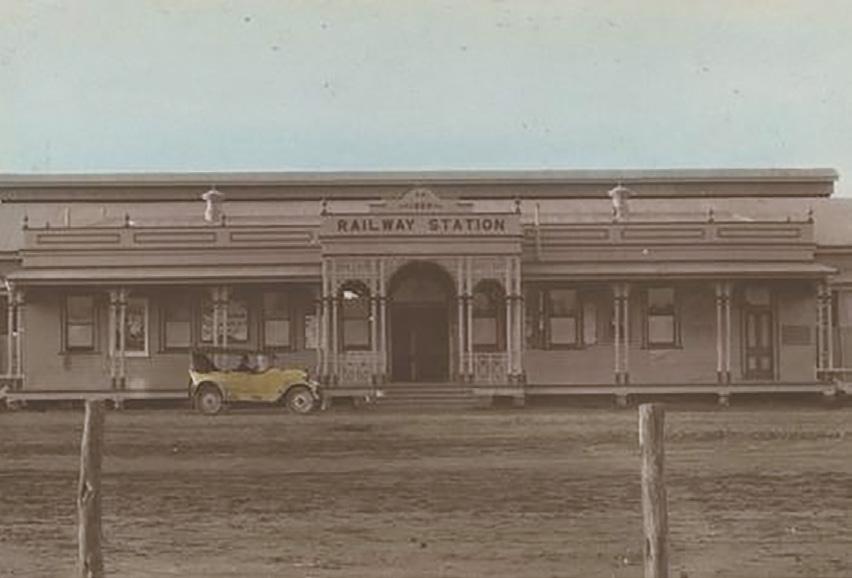
10. Senior Citizens Hall
9. Railway Station
This is one of only three covered railway platforms in Queensland. Constructed in 1930, this building replaces the original building (1898) which was destroyed by fire.
The railway line opened on 10th October, 1898. It was originally intended that the line should cross the Warrego River and continue on to Thargomindah and to the South Australian border. Regrettably this did not eventuate. Also the line was planned to continue south to Bourke.
The line came from Brisbane to Ipswich, Toowoomba, Roma, Charleville, Wyandra and terminating in Cunnamulla.
This building was the Methodist Church and was opened in 1900. The site was donated by the first minister Rev. F. Greenwood and Mr. W. J. Smout. The Building Fund was raised by straight out giving, and the Church was opened free of debt. Messrs. E. Saunders, W. J. Smout and the late E. Rawle (Moorabinda) were the original trustees.
The building was sold to the Odd Fellows Lodge at the end of WWI. The Buffalo Lodge owned the Hall prior to 1985. After a lot of fundraising and generous donations by business houses, the building was purchased in 1985 by the Senior Citizens Club.
11. Tonkin House
The top storey of this building is the original house. Joe Vowles, a saddler, had arrived in Cunnamulla by 1876 and built the house to accommodate his large family. In more recent times, the Wilson family and the Miller family lived here and operated a cordial factory until the early 1970s. The Miller family was well known in racing circles. Champions included “Lumley’s Pride” and “Lingo” trained by B. Miller, and “Gallant Ruler” trained by T. Miller.
The previous mayor of Cunnamulla retained the door and architectural feature of the house when it was raised in 1989.
CUNNAMULLA RAILWAY STATION
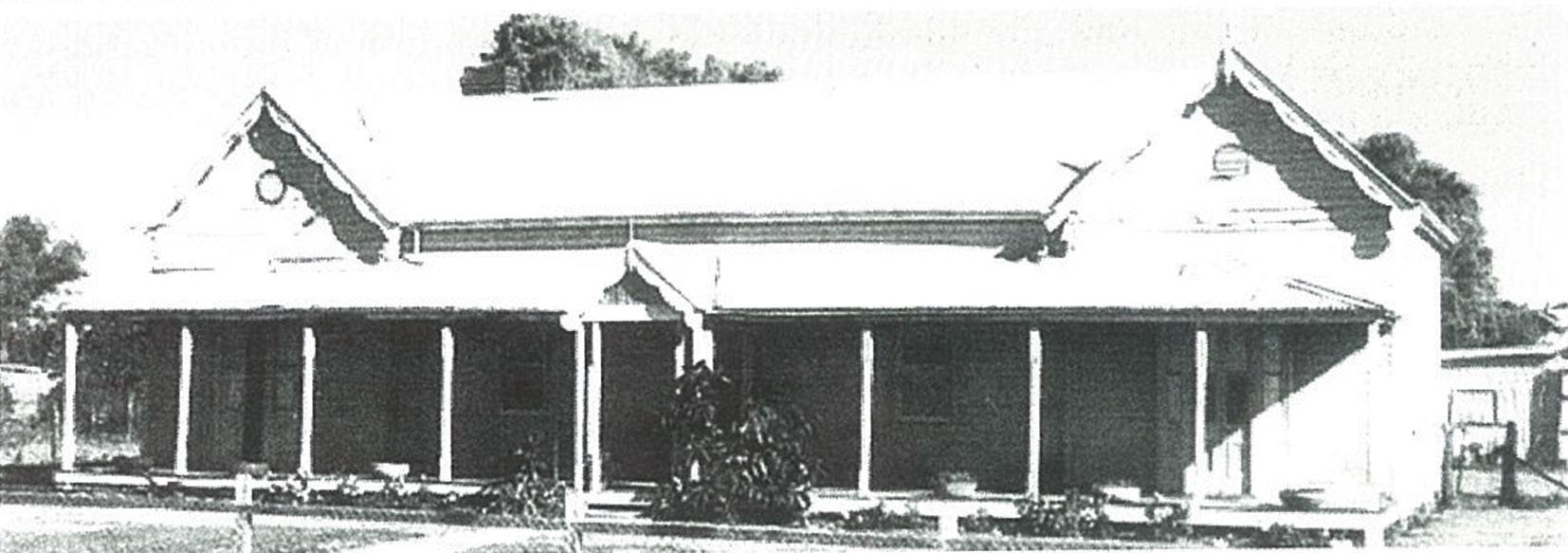
12. Catholic Church
The original Catholic Church was built in 1897. Father O’Sullivan was the first resident priest in Cunnamulla from 1898 to 1910. In 1914 a Convent was constructed and in 1915 three Sisters of Mercy were appointed to commence a school. Classes were first conducted on the Convent verandahs. In 1922 the first school was built. A Presbytery was built in 1936 and moved to its present site in 1955. Father Bergin was the driving force behind improvements to the Convent and the construction of the new Sacred Heart School complex in 1966. While the new school was being constructed lessons were conducted in the old Shire Hall.
13. The Robber’s Tree
On 16 January 1880 Joseph Wells, a station hand, robbed the Queensland National Bank at Cunnamulla at gunpoint. The alarm was raised and as Wells was about to leave the bank, storekeeper William Murphy from next door attempted to restrain him and in the scuffle, was shot accidentally in the shoulder. This allowed Wells to escape from the bank, only to find that a crowd of onlookers was gathering outside. Unable to control his horse, Wells ran into the bush surrounding the town. A search followed; a sheep dog, which had joined in the chase, followed his scent to the base of a tree.
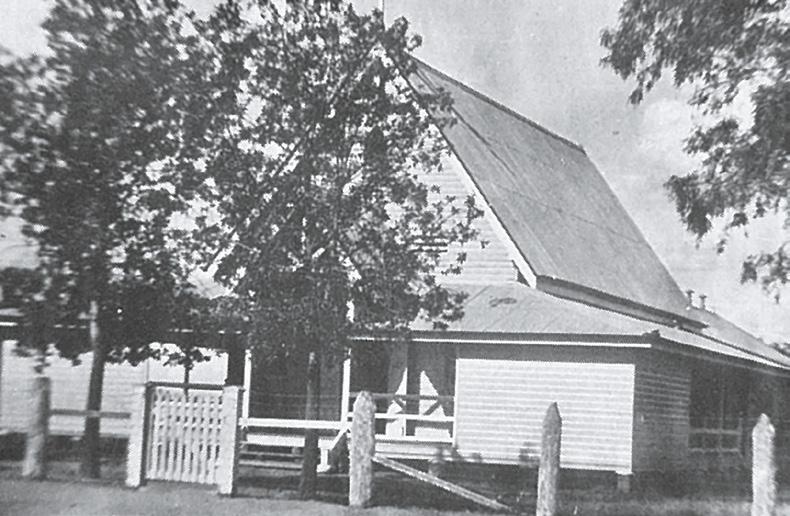
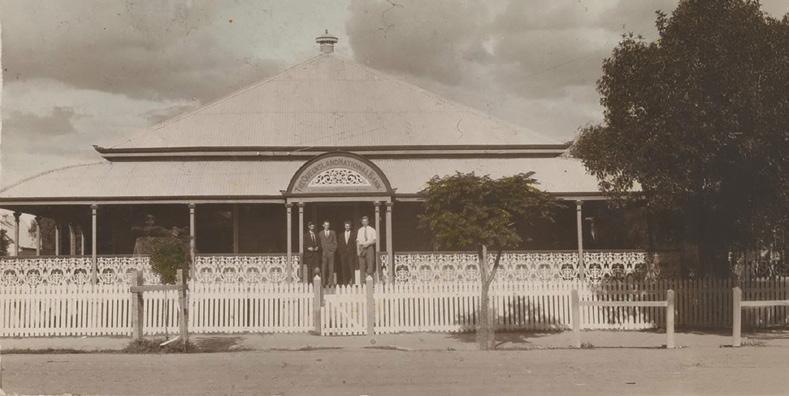
Wells was captured and transported to Toowoomba to await trial. He was found guilty and sentenced to death. The bank manager and the wounded storekeeper petitioned for a lighter sentence; however, it was denied and Wells was hanged.
Joseph Wells goes down in history as the last man, in Queensland, to receive the death penalty for armed robbery with wounding in Queensland. Unfortunately the tree was struck by lightening in 2021 left just the trunk. Plans are currently underway for a permanent memorial
TONKIN HOUSE
THE CATHOLIC CHURCH
CUNNAMULLA NATIONAL BANK
14. Wyenia
This wagon originally came from Warracknabeal district in Victoria. It was owned by the Lewis and Keegan Families who used it to cart wheat from the districts of Brim, Bulah and Hopetown to the wheat dumps and silos of neighbouring towns. This was the last horse drawn wagon to be used for delivering wheat.
The wagon was stored in a shed for many years and used to store the farm fertiliser. In late 1977 a well known Cunnamulla man, Mr Jimmy Goulding, bought the wagon. Jimmy’s bullock teams became a familiar sight in Cunnamulla as they pulled the wagon. When Jimmy retired to Toowoomba he took his wagons and teams with him. They were used at the Jondaryan Woolshed for many years.
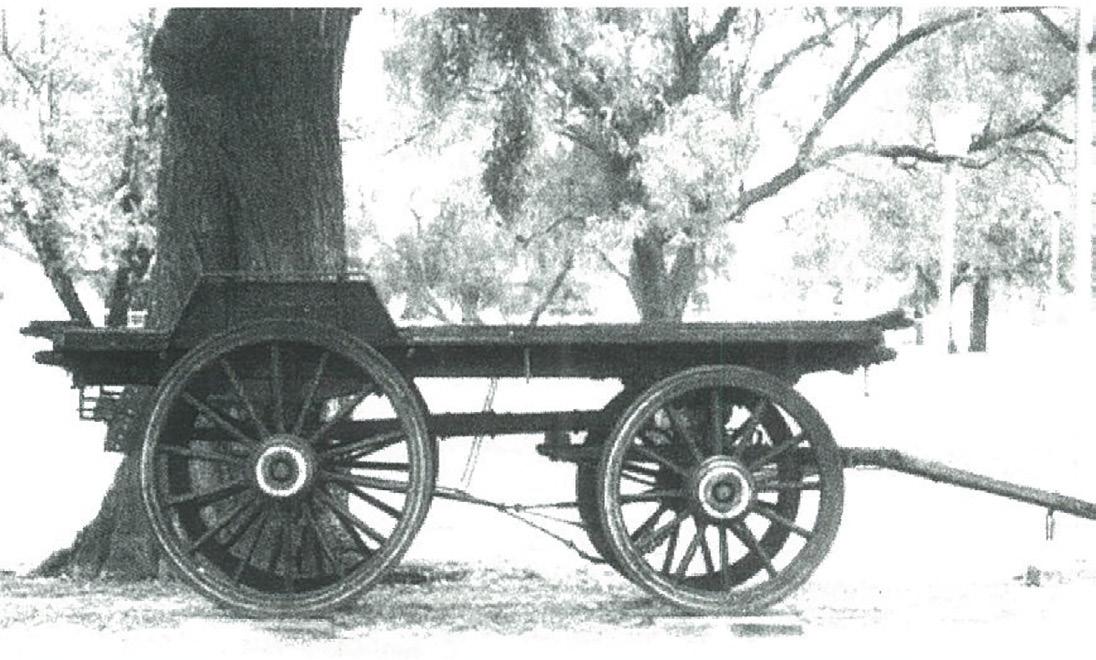
The wagon was eventually returned to Cunnamulla and donated to the Historical Society in memory of the Lewis and Keegan Families. Mr Jack Keegan was a Councillor for many years and owned a prosperous fruit orchard on the banks of the Warrego some three miles downstream from the town.
15. The Punt
In the mid 1880s the Paroo Divisional Board commenced the operation of a punt across the Warrego River. To ensure that everyone would use the punt, the Board attempted to enact by-laws making it unlawful to swim horses within one mile of the public ferry. The ferry man would guide the punt across the river by pulling an overhead cable.
However, within a few years the Board received a petition from 17 ratepayers that a bridge be built across the Warrego. To finish The Cunnamulla Heritage Trail, follow the Warrego River Walk, cross the bridge over the river and to the area called the “police paddock”. In the early days of settlement this paddock was used to hold the horses used by the policemen. It has also been used to impound stolen stock.

WYENIA – THIS INFORMATION WAS GIVEN BY THE LATE IAN ‘ROPER MCLEAN’.
cunnamulla hotel and pub heritage
We invite you to pull up a bar stool, soak in the atmosphere of one of our unique establishments and enjoy some great outback hospitality.
The Club Boutique Hotel – The present pub is the third building. It was constructed in 1933. The original Club Hotel was destroyed by a cyclone in 1892. The second building was burnt down on St Patrick’s Day, 1932. The hotel was refurbished and changed to the “Club Boutique Hotel” in 2013.
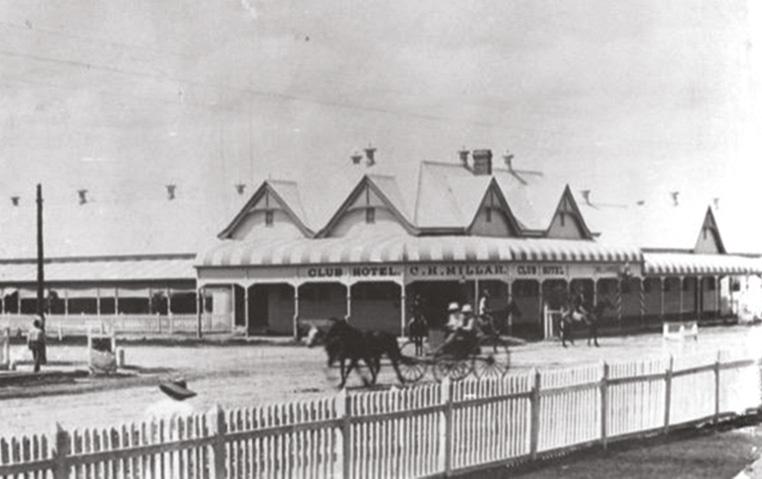
The Shearer’s Arms – Mr H McManuus was granted licence in 1878 and built the “Tattersalls Hotel”. The original building was destroyed by fire and replaced by the brick building that stands today. The name was changed to the “Shearer’s Arms” in the mid 1980s and the licence was sold in the early 1990s.
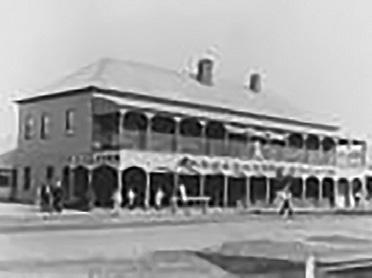
Hotel Cunnamulla – The first hotel on this site was “The Post Office Hotel” built by Mr Huxley. Mrs SA Land was the licensee for many years during which time her husband Mr EM Land, MLA, as the Labor Member in State Parliament. Dipper Carter was also a licensee of this hotel. The “Hotel Cunnamulla” was built in the early 1930s to replace the original pub which was destroyed by fire. During the 1950s the hotel was famous for parties and special functions as the chef Fred Damillo was previously chief chef of Government House and was commissioned by Government House to cook for the Queen on her royal visit to Queensland in 1954.
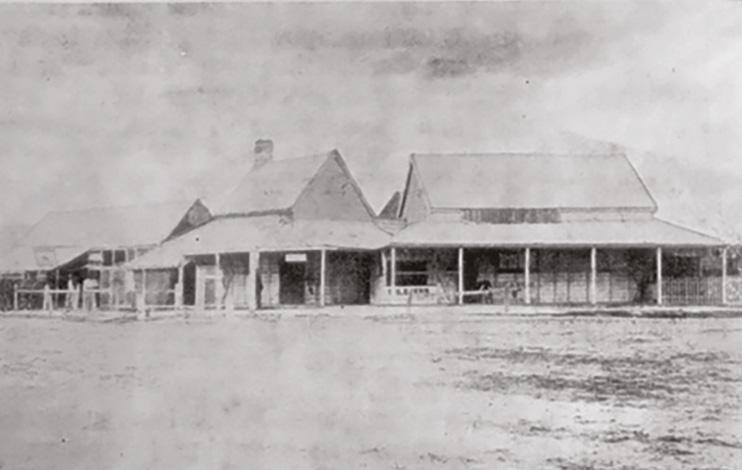
Billabong Hotel – The original hotel on the site was the “Gladstone Hotel” which was burnt down in 1960. The Billabong Hotel/Motel was a Carlton and United Breweries owned hotel and, until it was sold by CUB in the late 1980s it sold only Carlton beer.
Warrego Hotel – Mr Walsh built a pub on this site around 1868, known as the “Shingle Pub”. It was replaced by the “The Commercial Hotel” which occupied this site until it was burnt down in 1954. The licensee built a new pub called “Kerr’s Hotel”. The name was changed to the “Warrego Hotel” during the mid 1970s.
Oxford Hotel – As the railway station was always the destination of the bullockies, the Oxford Hotel was their base. The original pub was destroyed by fire in 1913 and, reportedly, some of the bullock drivers cried. They organised a tarpaulin muster for donations to ensure that the hotel was rebuilt. The old pub was replaced in the mid 1970’s with the new brick hotel.
cunnamulla bushlands
List of a number of the plants found at the Cunnamulla Bushlands, around our streets and parks and throughout the Shire. Numbers on or near plants correspond with numbers in this booklet.
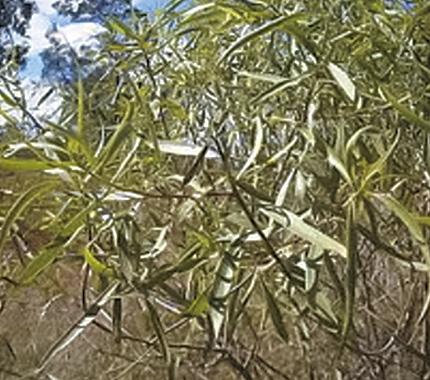

Common Name: Gooramurra. Botanical Name: Eremophila bignoniiflora. Family: Myoporaceae. Non Indigenous use: not known. Indigenous use: Fruits used as a purgative and leaves as a laxative. Description: Dense rounded small tree from 3 – 7mts with drooping branches. Grows on periodically flooded clay areas along with coolabahs and lignum communities. Bark: Segmented into squares, dark grey in old trees and roughly fissured. Leaves: Pale green, lanceolate to 18cm long. Flowers: Cream with purplish flecks inside, bell shaped with 5 broad rounded lobes, they occur on sticky stalks. Flowers mainly in spring. Readily eaten by sheep and cattle.
Common Name: Emu Apple. Botanical Name: Owenia acidula. Family: Meliaceae. Non Indigenous use: not known. Indigenous use: not known. Description: Small tree growing 4-8 m tall, it has a dense canopy that provides shade for stock and wildlife. Bark: Grey/ brown and blotchy. Leaves: Vivid green made up of a group of linear-lanceolate leaflets, each being 4cm long and 8mm wide. Flowers: Fragrant and greenish cream in colour and very small. Produces a red plum or apple like fruit which has an acidic flesh. Nutritious leaves eaten by stock.

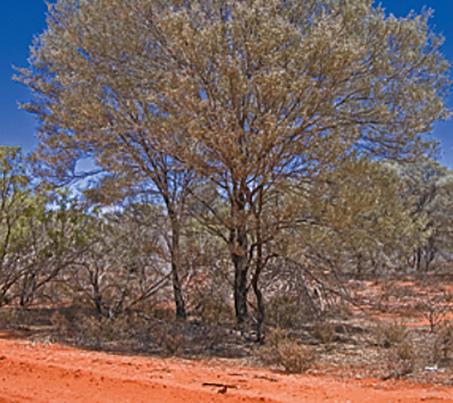
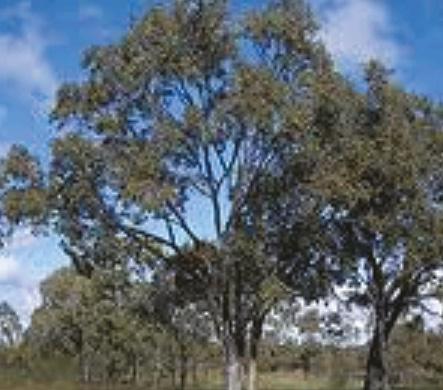
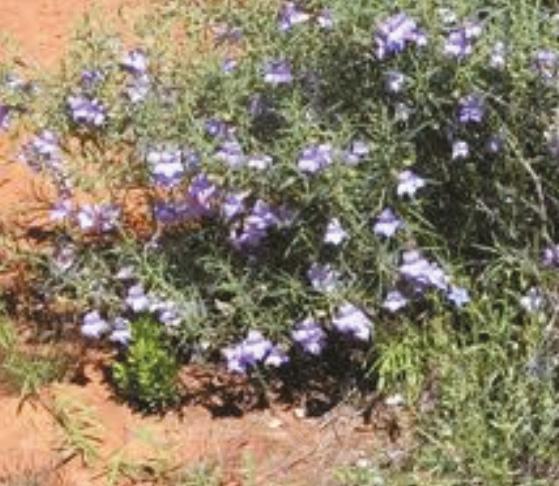

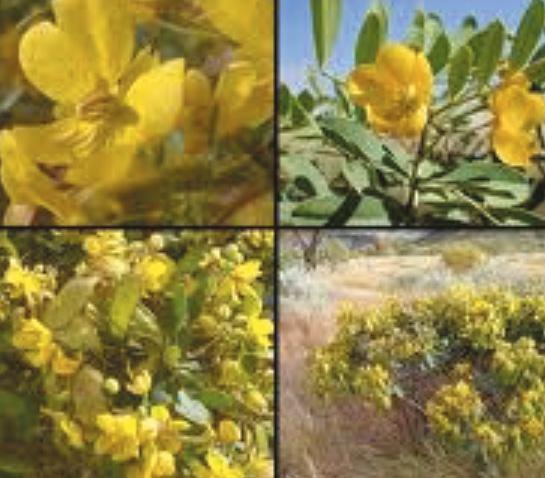
Common Name: Limestone Cassia. Botanical Name: Senna artemisiodes – Sub species: oligophylla. Family: Caesalphiniaceae. Non Indigenous use: not known. Indigenous use: not known. Description: Rounded spreading shrub grows from 1–2m with a blue-green foliage. Bark: Woody stems. Leaves: Made up of pairs of leathery rounded leaflets. Flowers: Short dense sprays of buttercup flowers happening from September to November. Often confused with grey cassia. Not very palatable to stock.
Common Name: Mulga. Botanical Name: Acacia aneura. Family: Mimosaceae. Non Indigenous use: Stock Fodder, fencing, to produce charcoal, bullock yokes and souvenirs. Indigenous use: boomerangs, digging sticks, spears, shields and the seed was used to make a flour. Description: Common shrub or tree up to 8m high Bark: Dark Fissured. Leaves: Thin greyish-blue leaves varying in shape and size, 3–7cm long with downy covering. Flowers: Bright yellow. Protection from erosion. High in crude protein but low in phosphorus so supplementary mineral blocks need to be fed to stock.
Common Name: Poplar Box or Bimble Box Botanical Name: Eucalyptus populnea. Family: Myrtaceae. Non Indigenous use: Suitable for construction work, fence posts, fire wood, windbreaks & shelter. It also produces good quality honey. Indigenous use: didgeridoos, humpies & used for burials. Description: Medium sized tree grows from 10–20mts, grows on red and sandy soils often associated with Mulga. It has a shimmering lush crown and is a drought tolerant plant. Bark: Flaky, fibrous, rough bark, light grey or greyish brown in colour. Bark covers all but the smallest branches. Leaves: Glossy and dark green on both sides they grow on long slender stalks, round, broad and lanceolate in shape growing 5–9cm long, 2–5cm wide. Flowers: Late summer with small buds in groups of 7–15 which open into whitish flowers. Only grazed under duress.
Common Name: Charleville turkey bush. Botanical Name: Eromophila gilesii. Family: Myoporacea. Non Indigenous use: not known. Indigenous use: not known. Description: Leafy and compact this shrub grows to 1.5mts. Downy and sticky and regarded as a woody weed. Leaves: Alternate, dull green and linear from 1–7cm long, narrow. Flowers: Pale blue to purple and bell shaped growing singly in the leaf axils during autumn and spring. Fruits are oval shaped and slightly hairy being dry and woody. Not palatable for stock.
Common Name: Grey Cassia . Botanical Name: Senna artemisioides – sub species Sturtii. Family: Ceasalpiniaceae. Non Indigenous use: garden plant. Description: Grey in colour, woolly and round in appearance, grows to 2m in height. Bark: Stems become hairless with age. Leaves: 4–5 pairs of linear oblanceolate leaflets 10–20mm long and 3–4mm wide, they sometimes have a notched tip. Flowers: Five petal, yellow buttercup like flowers with 4–8 racemes in the leaf axils. Flowers winter/spring. Not generally used for grazing, but the pods are palatable to sheep.
Common Name: Silver cassia. Botanical Name: Senna artemisioides. Family: Caesalpiniaceae. Revegetation in native parklands. Indigenous use: Ceremonial and medicinal use. Grubs found on the roots often used as a food source. Description: An attractive showy shrub up to 2m tall and 1.5m in width with erect slender stems. Quick growing but short lived. Leaves: Silvery grey-green consisting of up to 10 pairs of leaflets. Flowers: Sweetly scented yellow 5 petalled flowers in late winter/spring. Grazed at times by sheep, unpalatable to cattle. Some regions it occurs as a woody weed problem.

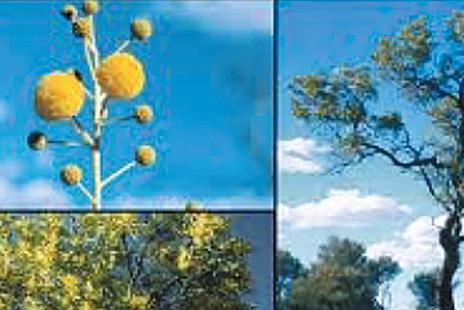

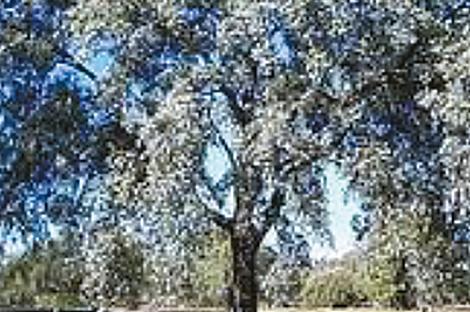
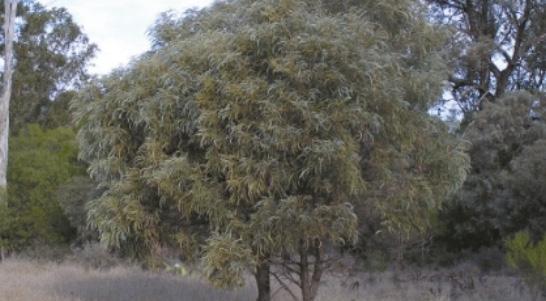

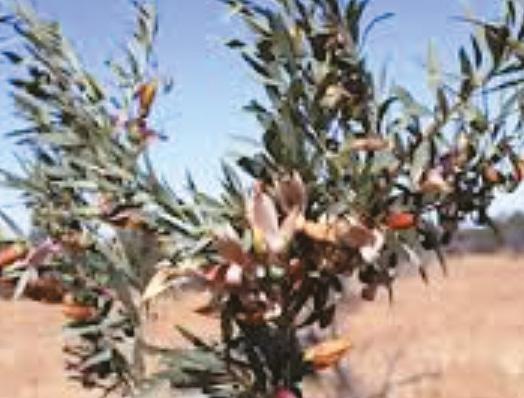
Common Name: False sandalwood. Botanical Name: Eremophylamitchellii. Family: Myoporaceae. Non Indigenous use: Essential oils. Indigenous use: Medicinal and for ceremonial rites. Description: Either a tree to 9mts or a shrub to 3mts. Commonly grows beneath larger trees such as gidgee, wilga and cypress pine. Sand and clay loamy earth or reddish-brown earths are preferable growing conditions. Bark: Dark brown almost black, oblong segments and rough. Leaves: Linear-lanceolate, sticky, bright green and very fragrant. Flowers: White or pale cream, small and bell shaped, borne either singular or in groups of 2–3. Unpalatable to stock. Considered a woody weed hard to eradicate. Drought tolerant.
Common Name: Gidgee. Botanical Name: Acaciacambagei. Family: Mimosaceae. Non Indigenous use: Wood turning, stock feed, fence posts, fire wood. Indigenous use: Spears, blended ash with pituri (a shrub) to poison waterholes to catch fish. Bark: Dark grey and deeply furrowed. Leaves: 3–14cm long, 4–10mm broad with small bend on tip and silvery grey in colour with a white flaky covering. Flowers: Clusters of golden balls. Dense stands on cracking clay soils and more sparsely on lighter soils. Also known as Stinking Wattle due to the smell emitted during humid or wet weather or when tree is flowering.
Common Name: Wilga. Botanical Name: Geijeraparviflora. Family: Rutaceae. Non Indigenous use: not known. Indigenous use: Used extensively for weapons and also for medicinal purposes such as poultices for open wounds, the leaves were used for aches and pains. Description: A medium sized dense tree with a rounded crown and drooping branches, grows to 9mts. They like red clay or sandy soils. Bark: Dark and very rough. Leaves: Dark green shiny narrow leaves that are spear shaped that grow to 18cm long, they are very aromatic when crushed. Flowers: White five-petalled flowers which are quite small borne in open clusters at the end of the stem. The flower, not unlike a citrus flower with a strong aroma that attracts insects. Valuable shade and shelter tree. Palatable as sheep fodder. Drought and frost tolerant.
Common Name: Silver leafed ironbark. Botanical Name: Eucalyptusmelanophloia. Family: Myrtaceae. Non Indigenous use: Shade and shelter tree. Timber used for fence posts and sleepers. Indigenous use: not known. Description: Small to medium tree to 20mts, distinctive tree with a silvery crown, often gnarled and can be straggly, well suited to hard exposed situations. Bark: Hard and very dark (reddish black) deeply furrowed with good coverage. Leaves: Silver, bluey-grey leaves, oval to round in shape and they grow opposite each other. Flowers: White coloured growing in clusters of 3–6, flowering in spring through summer. Only browsed by stock in hard times.
Common Name: Brigalow Botanical Name: Acacia harpophylla. Family: Mimosaceae. Non Indigenous use: Rails, fodder and firewood. Indigenous use: spear shafts, boomerangs and Nulla Nullas. Sap was used for curing skins of animals. Description: grow up to 10mts high which often form a dense stand usually as the result of root suckers generally on clay soils where gilgiis are present. Bark: hard dark brown, dark grey to black and fissured. Leaves: silvery canopy. Flowers: Yellow and red.
Common Name: River Red Gum. Botanical Name: Eucalyptuscamaldulensis. Family: Myrtaceae. Non Indigenous use: Suitable for heavy construction work, sleepers and fence posts. Indigenous use: The bark was used for making shields, roofing for huts and sheets of bark were also used to bury the dead. Description: Large spreading tree grows to 40mts. Grows mainly in heavy clay soil areas on river and creek banks, also on floodplains. Bark: Dark and rough on lower trunk, smooth, white or ash coloured upper trunk and limbs. Leaves: Alternate, lanceolate with pointy tip to 22cm long, blueish green with new growth being a pinkish colour. Flowers: Cream flowers grow in groups of 5–10, flowering from December through February. One of the most widespread eucalypts. Frost hardy, known koala food tree, only grazed by stock under duress, older trees with hollows are invaluable to birdlife as nesting places.
Common Name: Spotted fuschia bush. Botanical Name: Eremophilamaculate. Family: Myoporaceae. Non Indigenous use: Native garden specimen. Indigenous use: Medicinal for colds. Description: Densely compact thick shrub grows to 1.5mts. Very hardy plant growing on most soil types. Bark: Woody stemmed shrub. Leaves: Alternate dark green leaves are tapered at both ends. Flowers: Coloured red through to yellow, bell shaped with red or brown spots inside. Winter spring flowering and often through to summer. 15–20mm globular fruit is hard and smooth when ripe and very succulent. Browsed by stock but is known to be toxic at certain times or if stock are under duress.



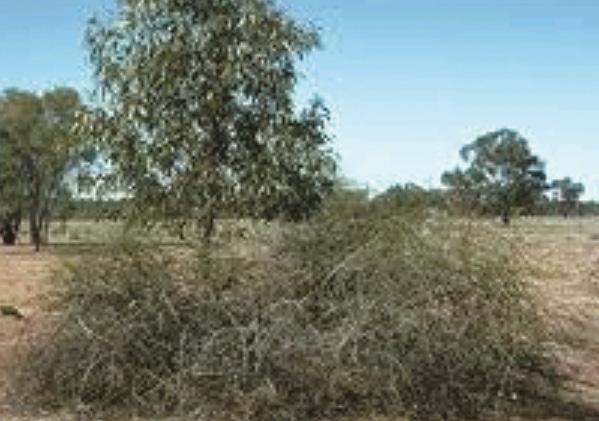
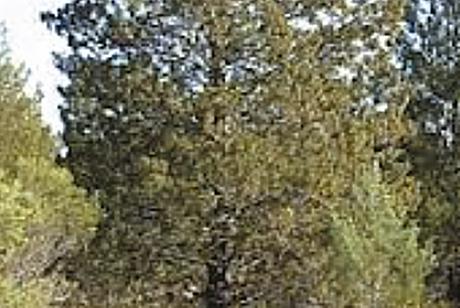
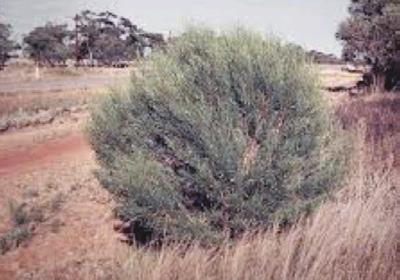
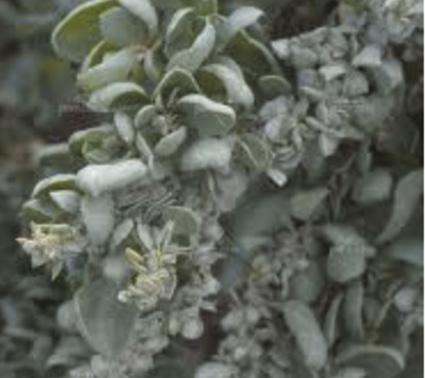
Common Name: River tea tree. Botanical Name: Melaleuca linariifolia – var.trychostachya. Family: Myrtaceae. Non Indigenous use: Ornamental tree in parks and gardens. Also used for screens or windbreaks. Indigenous use: not known. Description: Multi stemmed spreading shrub or tree to 10mts. Bark: White coloured peeling, papery bark. Leaves: Grow opposite each other, they grow long and are narrow and pointed. Flowers: Perfumed cream flowers grow on loose spikes up to 3cm in length, similar to a bottlebrush spike. Flowers in summer. Mainly found growing along rivers or permanent waterholes, but are also drought tolerant. Great tree for native birds and insects.
Common Name: Lignum. Botanical Name: Muehlenbeckiacunninghamii. Family: Polygonaceae. Non Indigenous use: not known. Indigenous use: not known. Description: A tangled and intertwined shrub with many slender striated branches and branchlets, grows to 2.5mts. Bark: Grey green stems often pointed at the end. Leaves: The small leaves are dropped as the plant matures. Flowers: Grow in a whorl-like cluster along the branches, they are small and creamy coloured and occur throughout the year. Associated with wetland habitats especially in arid and semi-arid areas prone to flooding. Because of dense growth it provides a protected breeding habitat for native wildlife such as waterbirds and also for feral animals such as pigs, foxes and rabbits. Only grazed under extreme conditions.
Common Name: Slender wattle. Botanical Name: Acacia leptostachya. Family: Mimosaceae. Non Indigenous use: not known. Indigenous use: not known. Description: Sparse rounded shrub that grows to 2.5mts tall and wide. A very hardy plant that handles arid conditions. Bark: Dark grey and fissured on woody stems. Leaves: Silvery with yellowish veins and very tough. Flowers: Perfumed flowers that grow as a yellow spike in abundance over the shrub through June to August.
Common Name: Flowering lignum. Botanical Name: Eremophila polyclada. Family: Myoporaceae. Non Indigenous use: not known. Indigenous use: not known. Description: Dense straggly and sprawling shrub with sparse leaves, grows to 2mts both ways. Branches are rigid and curve downwards. Leaves: Narrow leaves to 6cm in length are dull green, linear and tapered to a stalky base. Flowers: White bell shaped flowers with brown spots. Fruits are oblong and pointed. Grows on flood plains and low lying areas. Palatable to stock only in dry times when little else is available.
Common Name: White Cypress Pine. Botanical Name: Callistrisglaucophylla. Family: Cupressaceae. Non Indigenous use: construction, flooring, external structures and fence posts. Indigenous use: not known. Description: A bushy conical tree growing to 20m. Provides shade and is drought tolerant. Bark: Rough and furrowed. Leaves: Bluish grey foliage, the many forked leaves are needle like and jointed. Very aromatic. Flowers: Male flowers are cylindrical and the female flowers are in whorls. Produces seed bearing cones. Sheep will eat leaves when little else is available. Termite resistant. Supports native wildlife, good food supply for native birds.
Common Name: Hopbush. Botanical Name: Dodonaeaviscosasubsp:angustissima. Family: Spindaceae. Non Indigenous use: A native garden specimen. Indigenous use: Dense wood used for making clubs. Description: A spreading, sticky shrub grows between 2–3m. Is a woody weed. Bark: A thin reddish bark covers a resinous stem. Leaves: 8cm long and narrow with toothed margins, bright green and glossy. Flowers: Inconspicuous but beautifully coloured plant due to distinctive capsules that have 3 or 4 spreading vertical wings, these can be green, red or purple. Plants flower from late winter through spring. Grazed sparingly.
Common Name: Old-man saltbush. Botanical Name: Atriplexnummularia. Family: Chenopodiaceae. Non Indigenous use: Hedges, windbreaks, firebreaks, grazing. Land rehabilitation. Indigenous use: seeds used as a condiment. Medicinal when mixed with other plants, used on all open wounds or ulcerated infections. Description: A large grey woody shrub growing to 3m high, 4m wide. Mostly grows in low lying clay soils but can grow just about anywhere. Drought resistant but can tolerate shallow flooding. Leaves: Stalked and roundly ovate, 10–25mm long. Flowers: Spring and early summer in groups at the end of the branch and the fruit fan shaped growing to about 8mm round.
fishing guide
Experience the tranquillity and excitement of fishing off the banks of an outback river or creek.
Use your skills to catch a “Yellow Belly” or the elusive Murray Cod in the muddy waters that flows throughout our river systems. The Golden Perch, “Yellow Belly”, is the most commonly caught fish but Murray Cod, catfish, and silver and spangled perch are also available in some areas. You may even be lucky enough to find a local that will share his secret spot with you. Check road and weather conditions prior to travelling.
FISH IDENTIFICATION
Golden Perch (Yellow Belly)
A common fish caught in our waterways and in Queensland. Adult Perch are moderate to large in size and are bronze, olive green to brownish in colour overall with a yellow ventral surface. The forehead is distinctly concave above the eyes and the lower jaw is protruding.
Minimum Size Limit – 30cm, Bag Limit – 10 Fish.
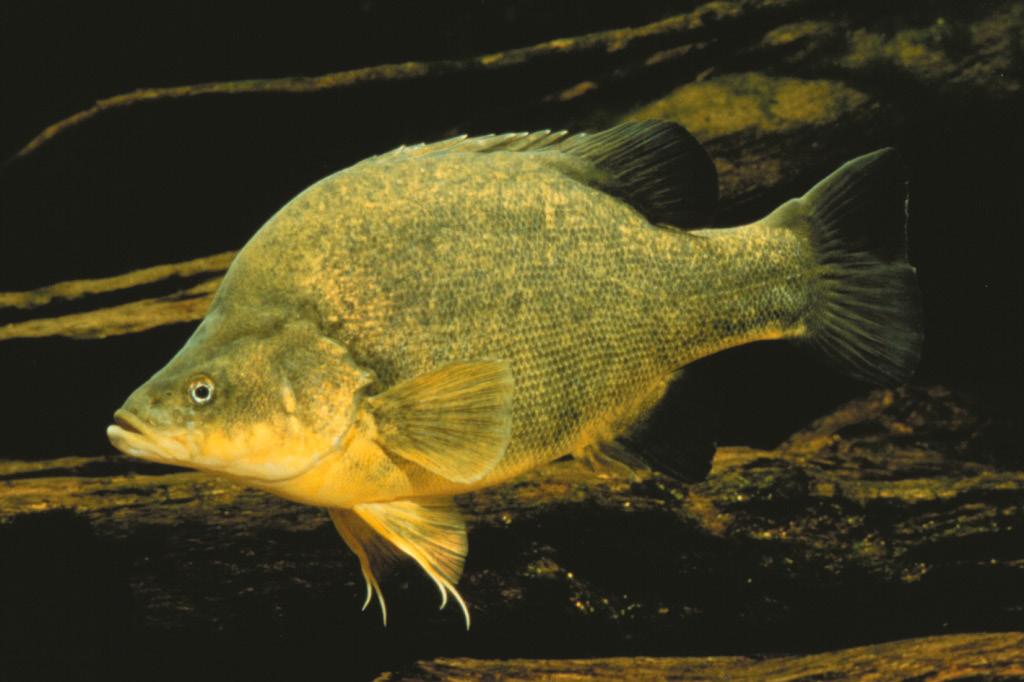
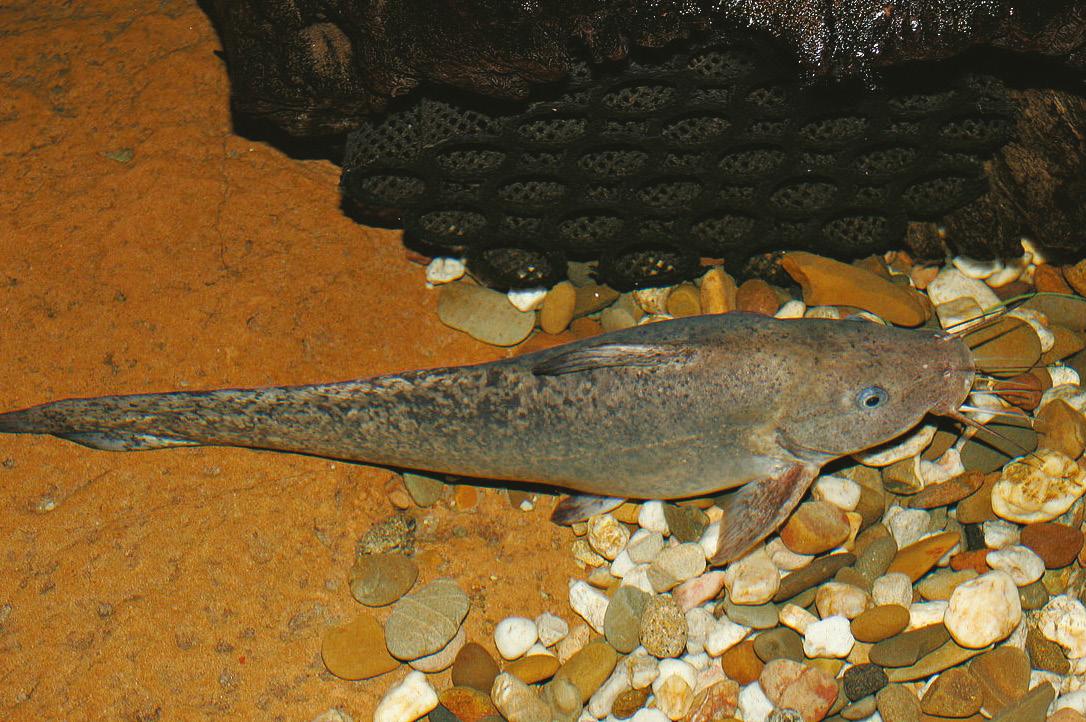
Freshwater Catfish
The Catfish may appear to have greenish-brown mottled skin, fading to a white on the belly. This fish also has large eel-like dorsal fins starting about the middle of the body.
CAUTION – The catfish has sharp barbs on their fins, although not poisonous they can cause sharp, burning pains if stabbed.
Minimum Size Limit – 30cm, Bag Limit – 10 Fish.
Murry Cod
The Murray Cod are golden-yellow with green to dark brown mottling. They have soft dorsal, pelvic and caudal fins with thin white margins. The head profile is of a concave nature, with a large mouth, extending back to behind the eye.
CLOSED SEASON – 1st September to 30th November Minimum Size Limit – 60cm, Maximum Size Limit –110cm, Bag Limit – 2 Fish.
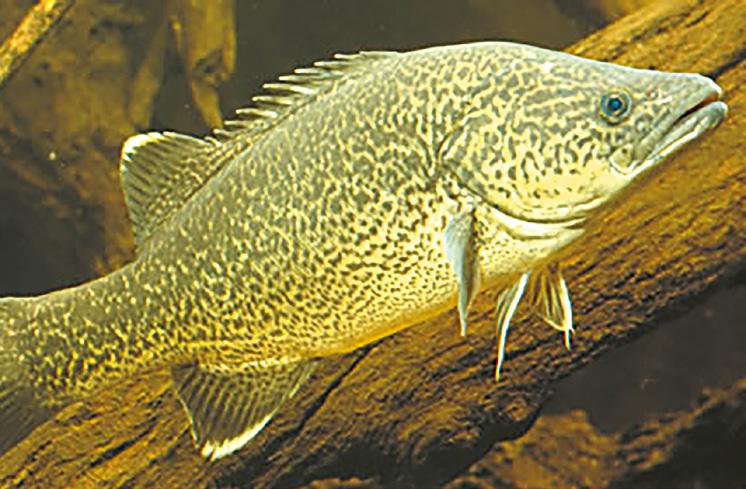
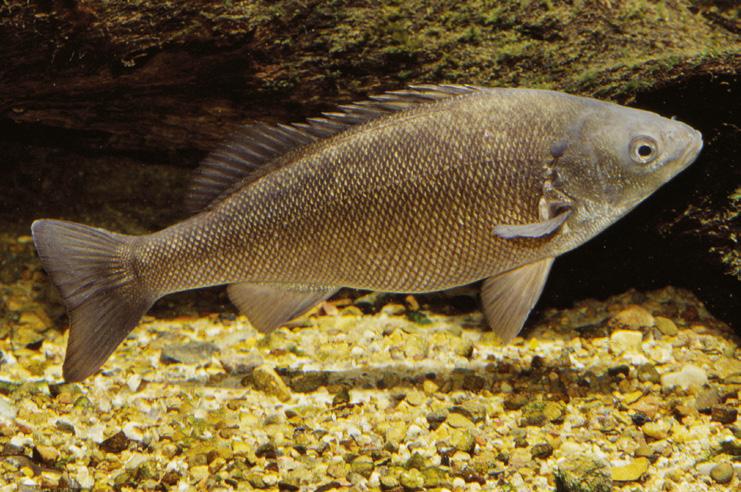
GOLDEN PERCH
MURRY COD
FRESHWATER CATFISH
SILVER PERCH
Silver Perch (Black Bream)
This fish may be identified by the small mouth and head in relation to the body size. Colour is usually silvery grey with darker scale margins, a whitish belly and dusky grey to black fins.
PROTECTED SPECIES – Strictly Catch and Release.
European Carp
Carp have large scales, a deeply forked tail, a single dorsal fin and two pairs of fleshy whiskers (or barbels) in the corners of their upper lip.
CARP ARE A NOXIOUS PEST – It is illegal to place or release noxious fish alive or dead into Queensland waterways. Penalties of up to $200,000 apply.
Must be disposed of, and not thrown back in. Use as bait or transport out of the area.
Yabby (Blueclaw Crayfish)
The Yabby is a crustacean species that burrows or uses the shelter of rocks and timber along shallow waters on river banks. The Yabby can be identified by its bluish brown body. Small yabbies make good bait
Freshwater Shrimp
Shrimp live in the shallow waters around weeds, logs and fallen trees throughout our local river systems. Shrimp are easily identified by their small translucent bodies and sharp barb protruding from the front of their head. Shrimp make fantastic bait for fishing. No Size or Bag Limits apply.
Spangled Perch
The fish is blue to gray with a silvery shine, and has reddish spots all over, except on the belly. The juvenile has a dark bar on the lower part of the tail. Common size is 150–200mm, and on rare occasions up to 250mm and 500g.
Minimum Size Limit – No Limit, Bag Limit – 20 Fish.
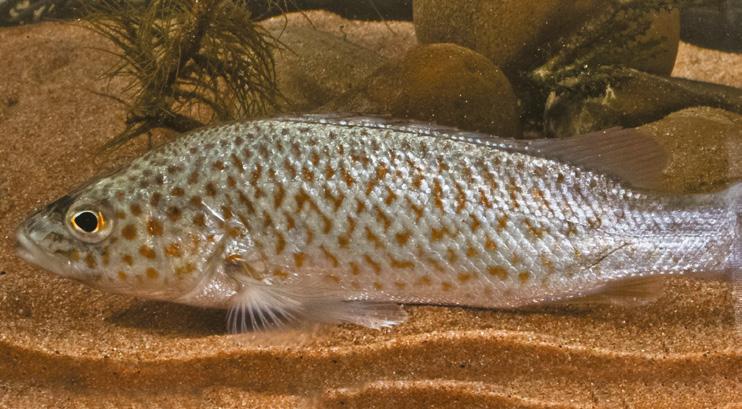
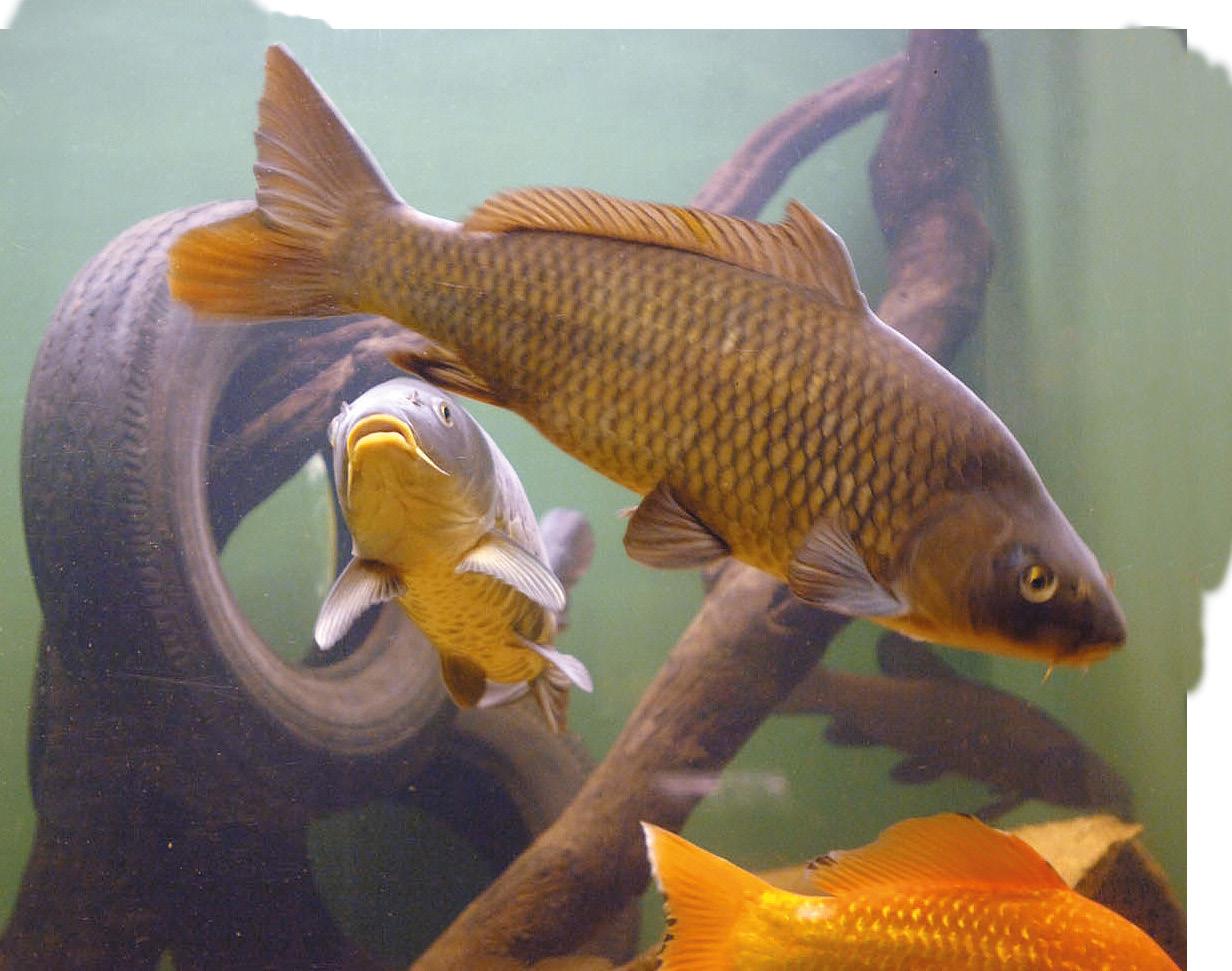
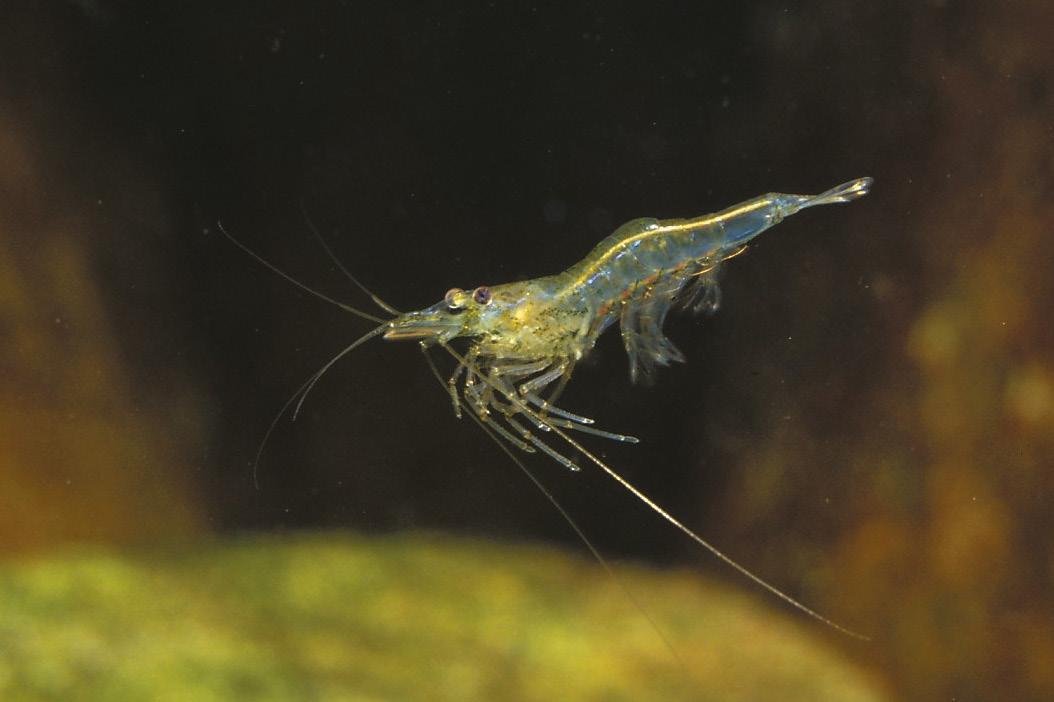

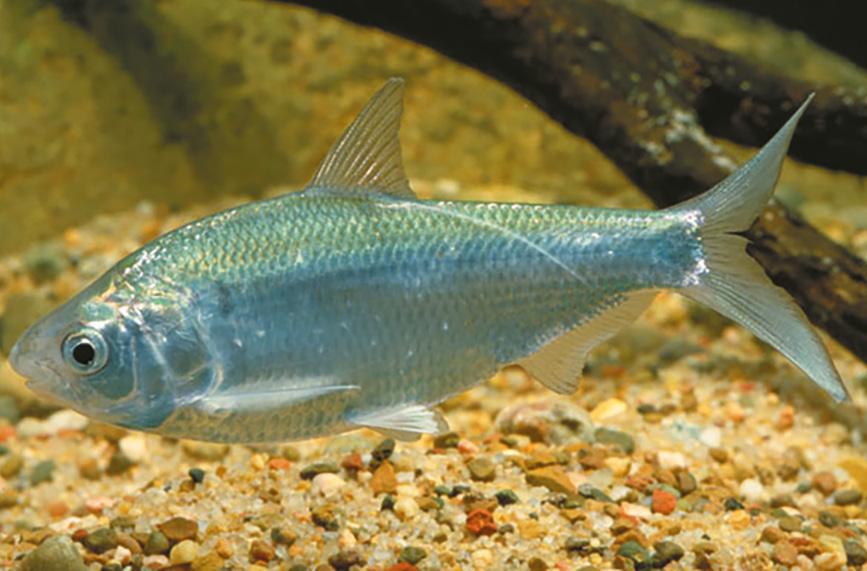
CARP
SPANGLED PERCH
FRESHWATER SHRIMP
BONY BREAM
BLUECLAW CRAYFISH (YABBY)
Bony Bream
The Bony Bream is a relatively deep bodied species with a blunt snout and bony toothless lower jaw. The scales along both the midline of the belly and the dorsal margin of the body in front of the dorsal fin, form a sharp serrate ridge. The species is silvery to grey, sometimes with a greenish or reddish tinge dorsally. The species grows to about 32cm in length.
Minimum Size Limit – No Limit, Bag Limit – 20 Fish.
BAIT & INFORMATION
For information on where to get bait please feel free to call in and see us at the Cunnamulla Fella Centre or phone us on (07) 4655 8470. For further information on fish identification visit www.fisheries.qld.gov.au or download the Queensland Fisheries App.

warrego river walk
The Warrego River Walk takes you along the scenic banks of the Warrego, across black flood plains and through the channels. It’s a great place for bird watching, fishing, enjoying the local flora and the serenity of nature.
The walk starts at the new Cunnamulla Hot Springs and meanders along the levy bank, under the Darby Land Bridge and back up across the bridge and to a place referred to by locals as the Police Paddock. Years ago, when police patrolled on horseback, they kept their horses in this paddock on the river. The Stock Squad has since used the paddock to impound or hold stock they suspect is stolen.
Be sure to watch your step, as the prolific birdlife will have you gazing into the skies, Western Grey and Red
Kangaroos are a common site, Meat Ants also known as Gravel Ants, are abundant. Watch out for their large nests which, although are typically built underground, are conspicuous by a mound of sand, gravel, pebbles or even bits of dead vegetation on the surface. A single nest may contain 64,000 ants. Meat Ants are omnivores (eat plants and animals) and because they forage during the day you’ll be able to observe them at work.
The sunset viewing platform is located approximately half way along the tour. If you time your walk correctly, you could be in for a spectacular display of outback nature at its finest. Our sunsets are arguably the finest in the world with rich, vibrant colours swirled across the sky contrasting against a palette of soft pastels that blend and graduate to the horizon.
CUNNAMULLA
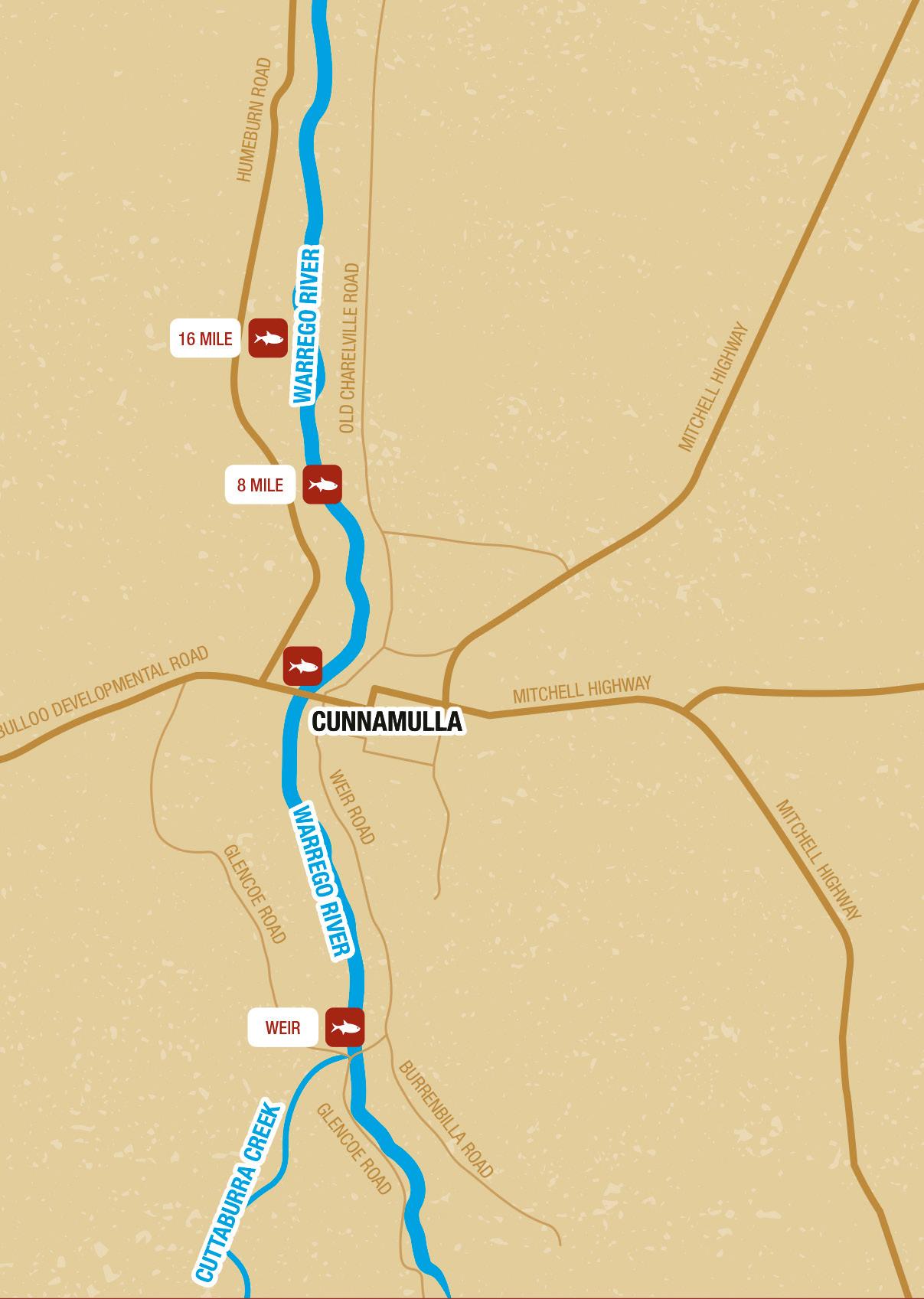
OLD CHARLEVILLE ROAD

